Bezel-free displays are a top trend in mobile electronics this year, spearheaded by the likes of the Samsung Galaxy S8 series and the LG G6. Apart from their large displays, how else do their specs and features compare? Join New Atlas as we take a look.
Size
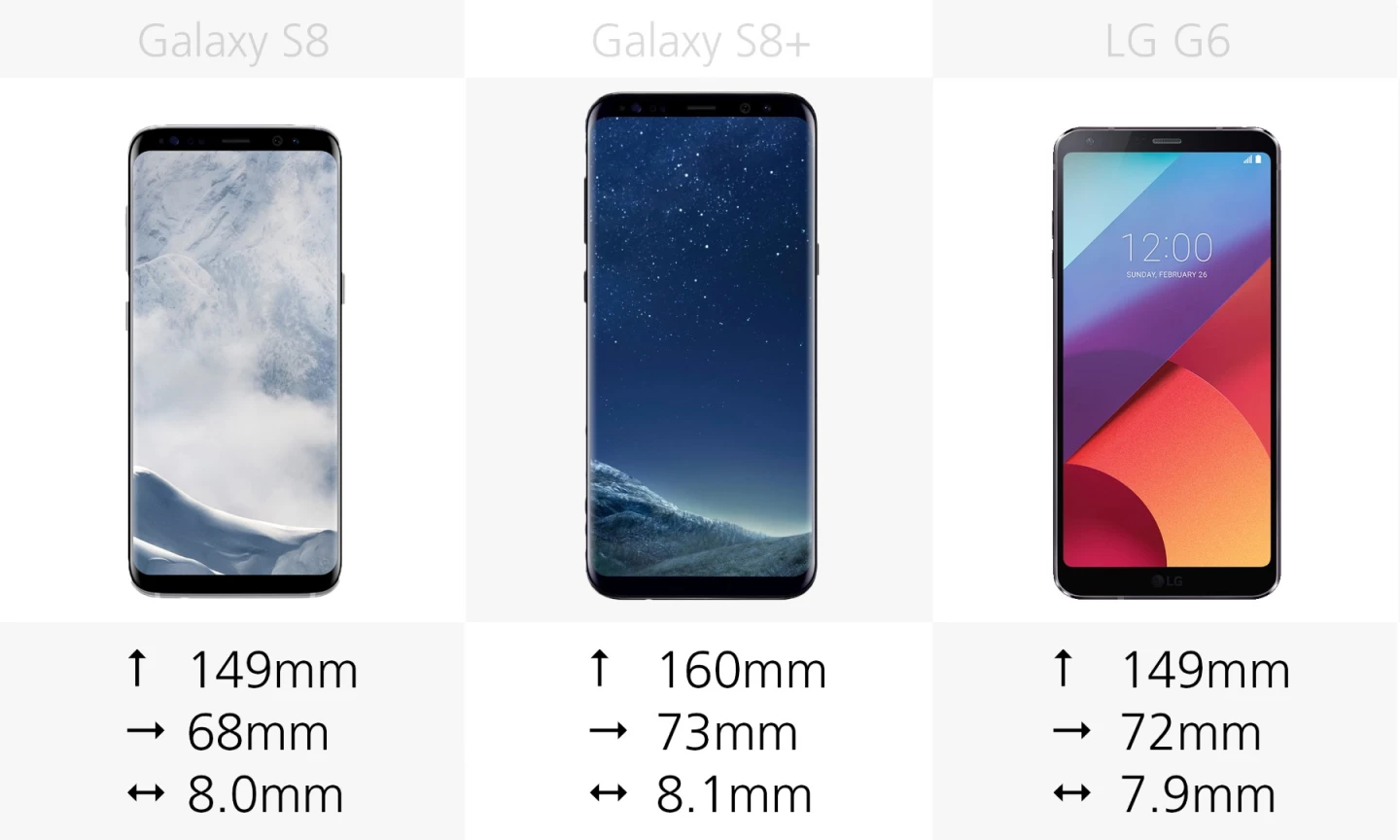
The two smaller phones – the LG G6 and the Galaxy S8 – are the same height, while the G6 is about 6-percent wider. In terms of thickness, they're all within two-tenths of a millimeter of one another.
Of these, the S8+ is the biggest phone. It's nearly 7-percent taller than the S8 and G6, and a millimeter wider than the G6. For a reference, it is slightly taller and more narrow than many of last year's major phablets (such as Pixel XL, iPhone 7 Plus and OnePlus 3T).
Weight
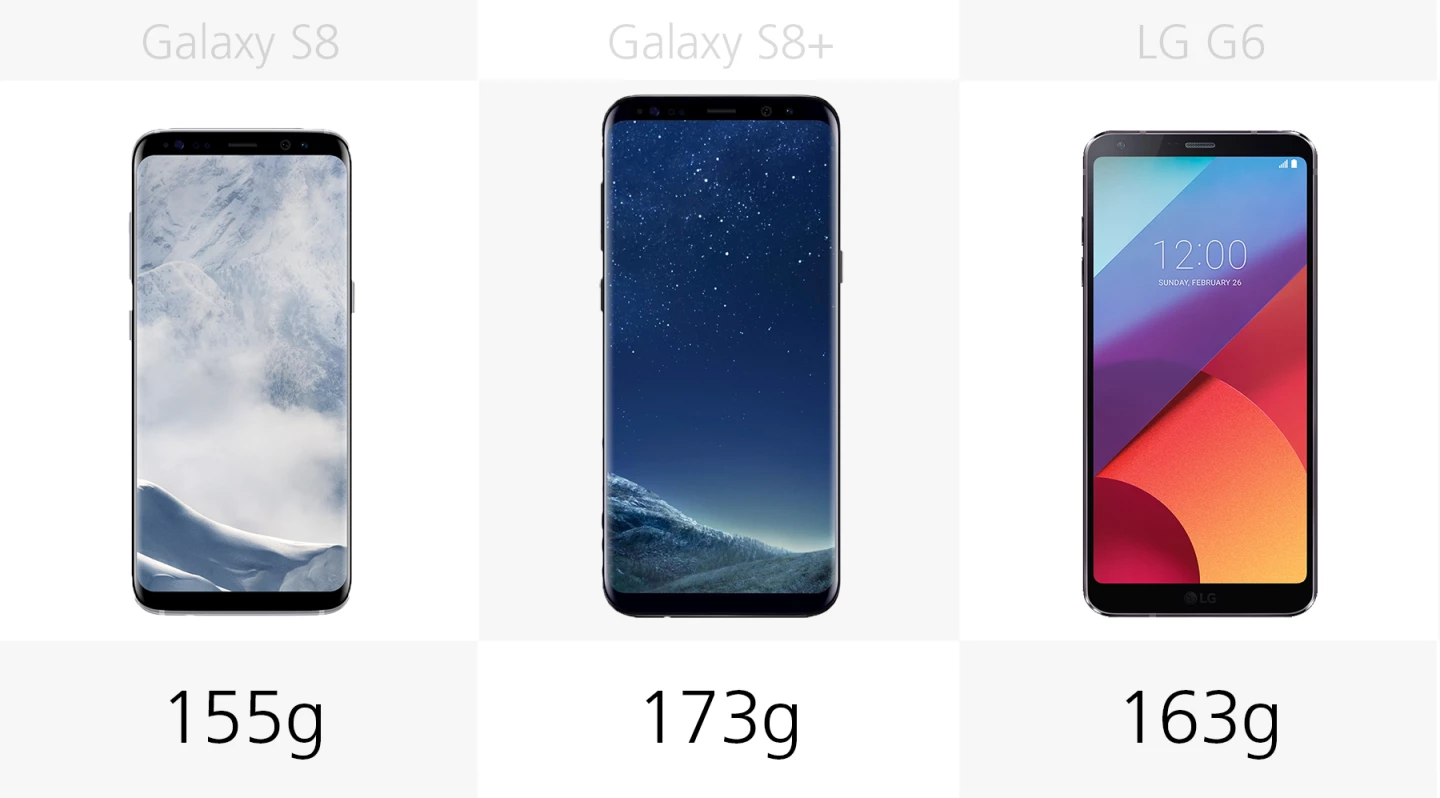
The S8+ is the heaviest, followed by the LG G6, then the S8. The S8+ is about 10-percent heavier than its smaller Galaxy counterpart.
Build
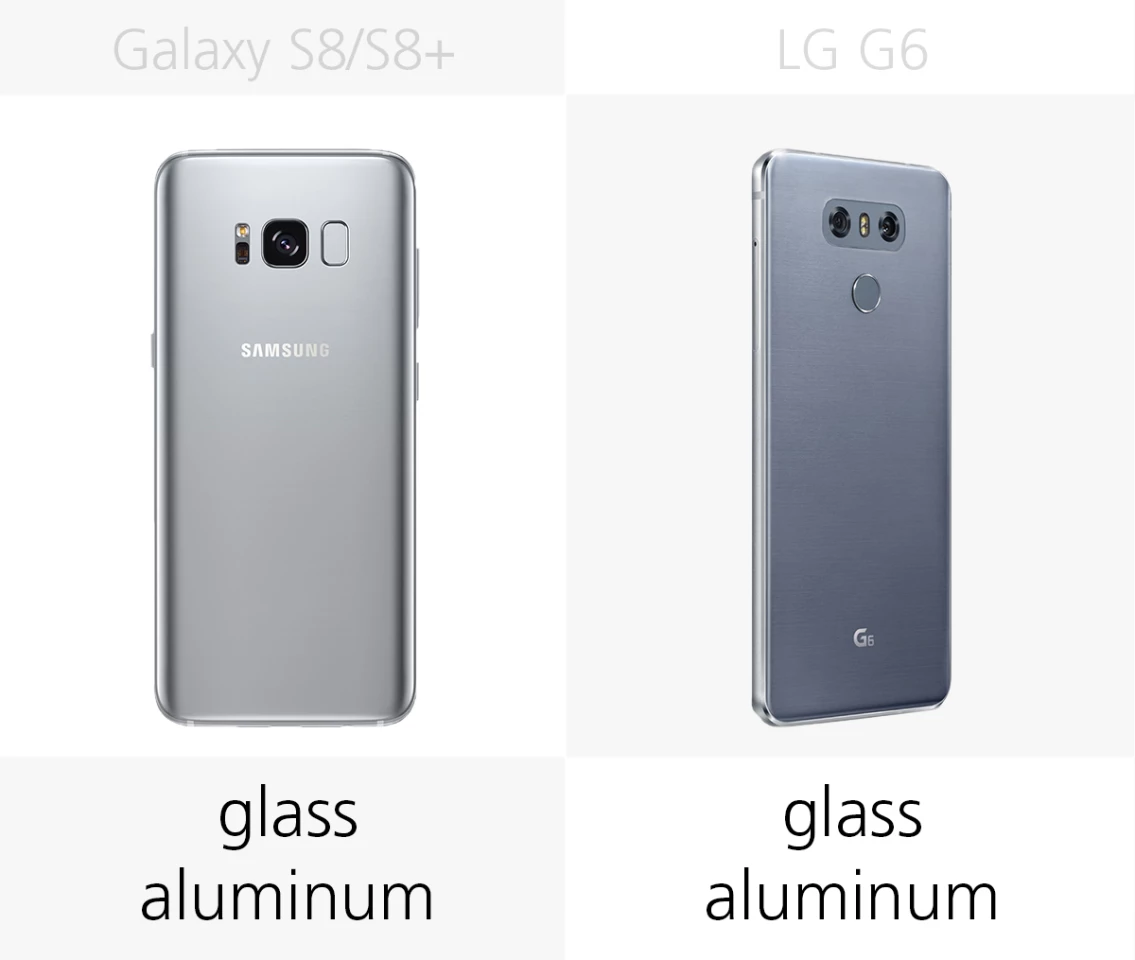
LG seems to be a bit of a Samsung copycat when it comes to build. While last year's LG G5 had an experimental modular form factor, this year's G6 seems heavily informed by the glass backs and aluminum frames of high-end Galaxy devices.
This year, flagships from both makers opt for that formula, though that frame is extra minimal on the Samsung devices.
Colors
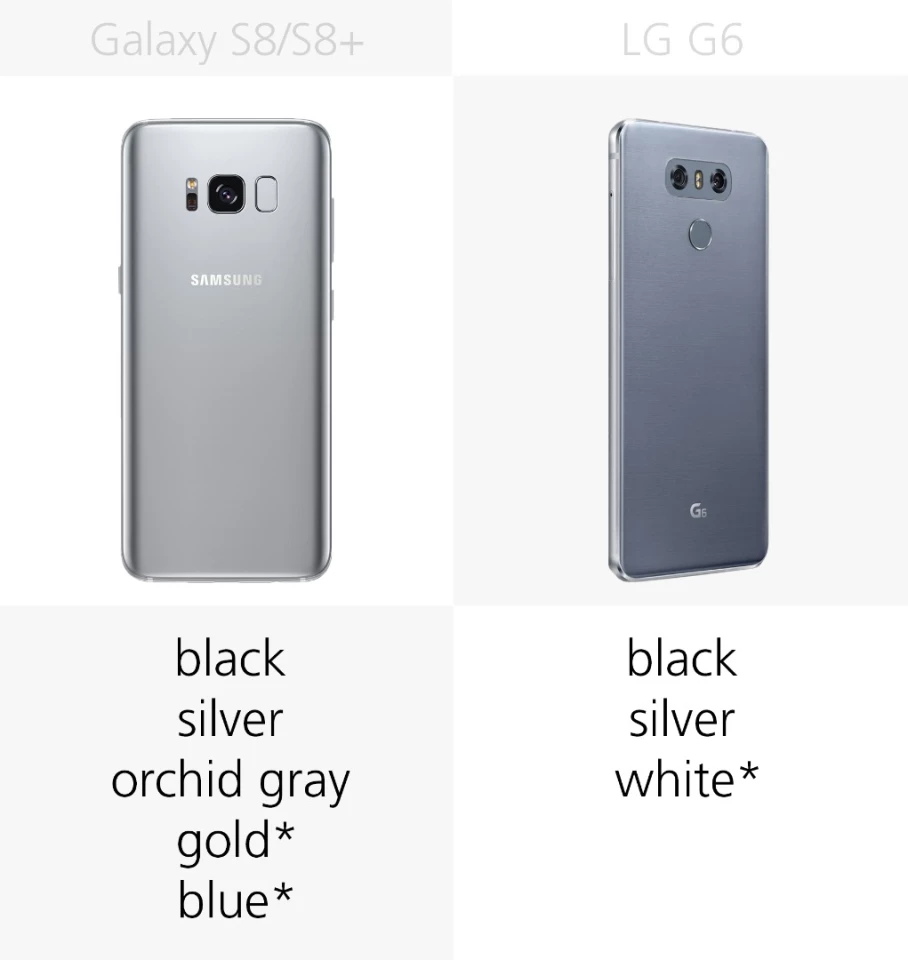
Samsung showed off five different color variants at its S8 unveiling, but only the black, silver and orchid gray options will be available in the US at launch. Of the G6's three colors, only the black and silver are available in the US.
Water resistance
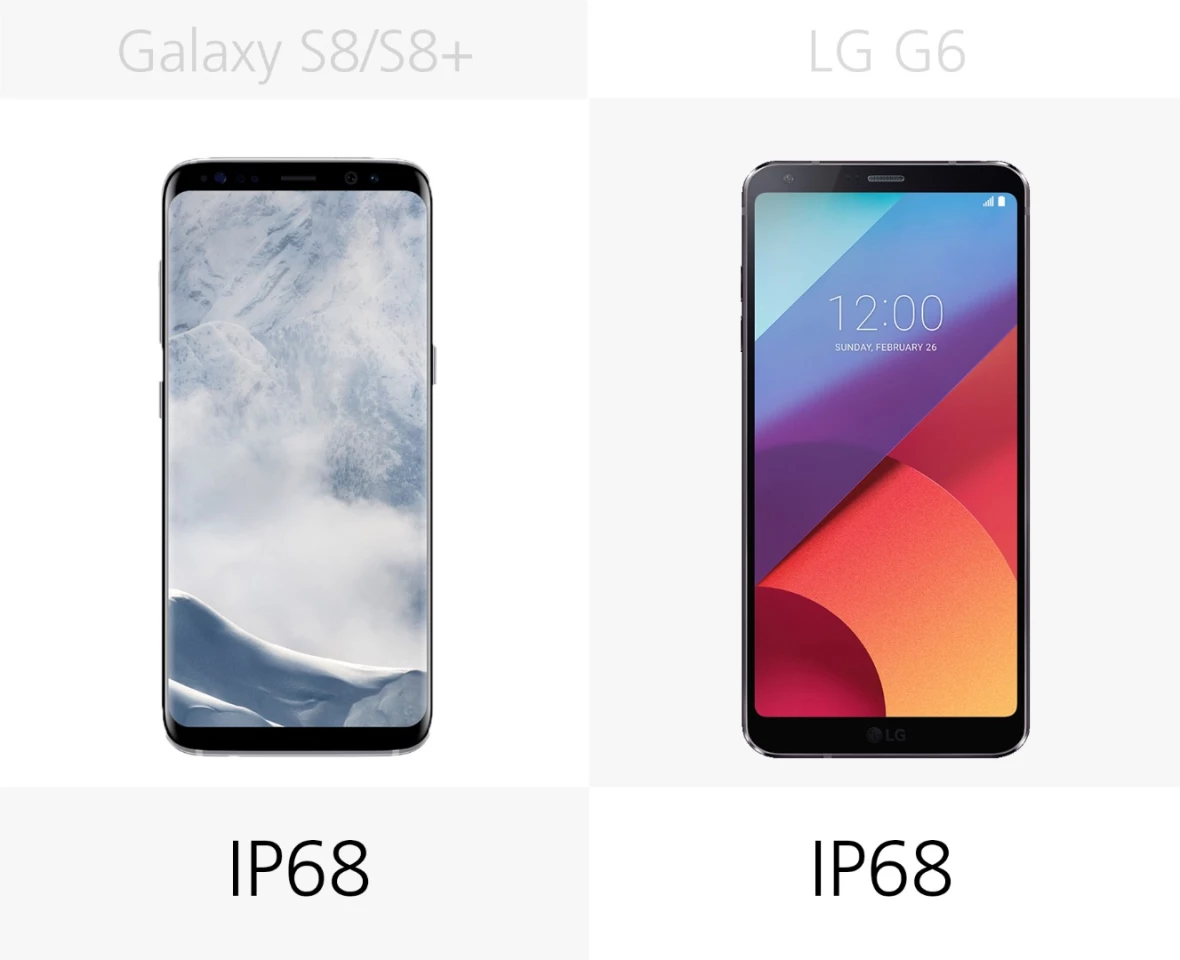
Both phones have industry-topping IP68 water resistance ratings.
Display size
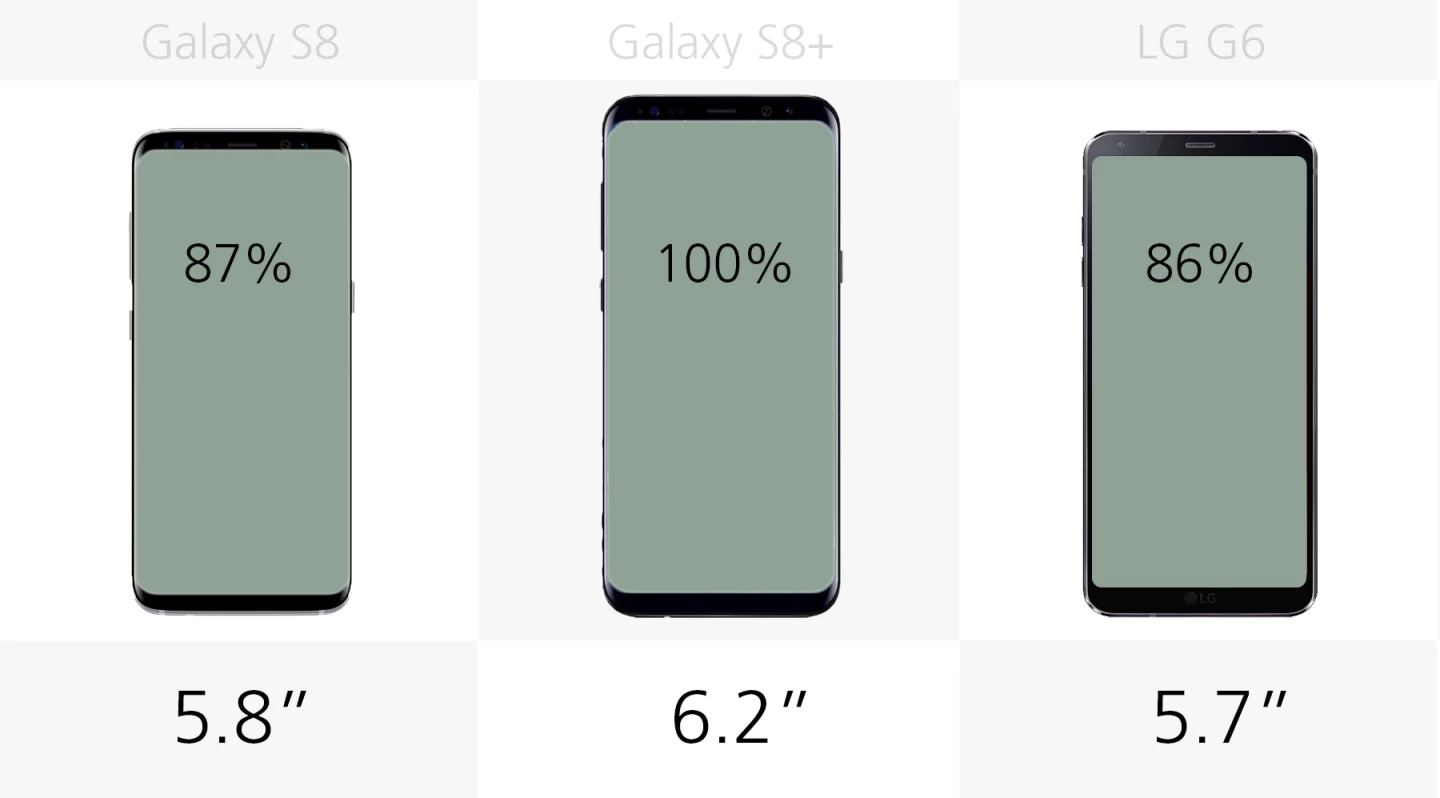
All three of these phones pack in some serious display area, with screens covering almost the entire front sides of the phones. Of course, the S8+ has the largest display. The S8 and G6 are about 13-percent and 14-percent smaller, respectively.
Display type
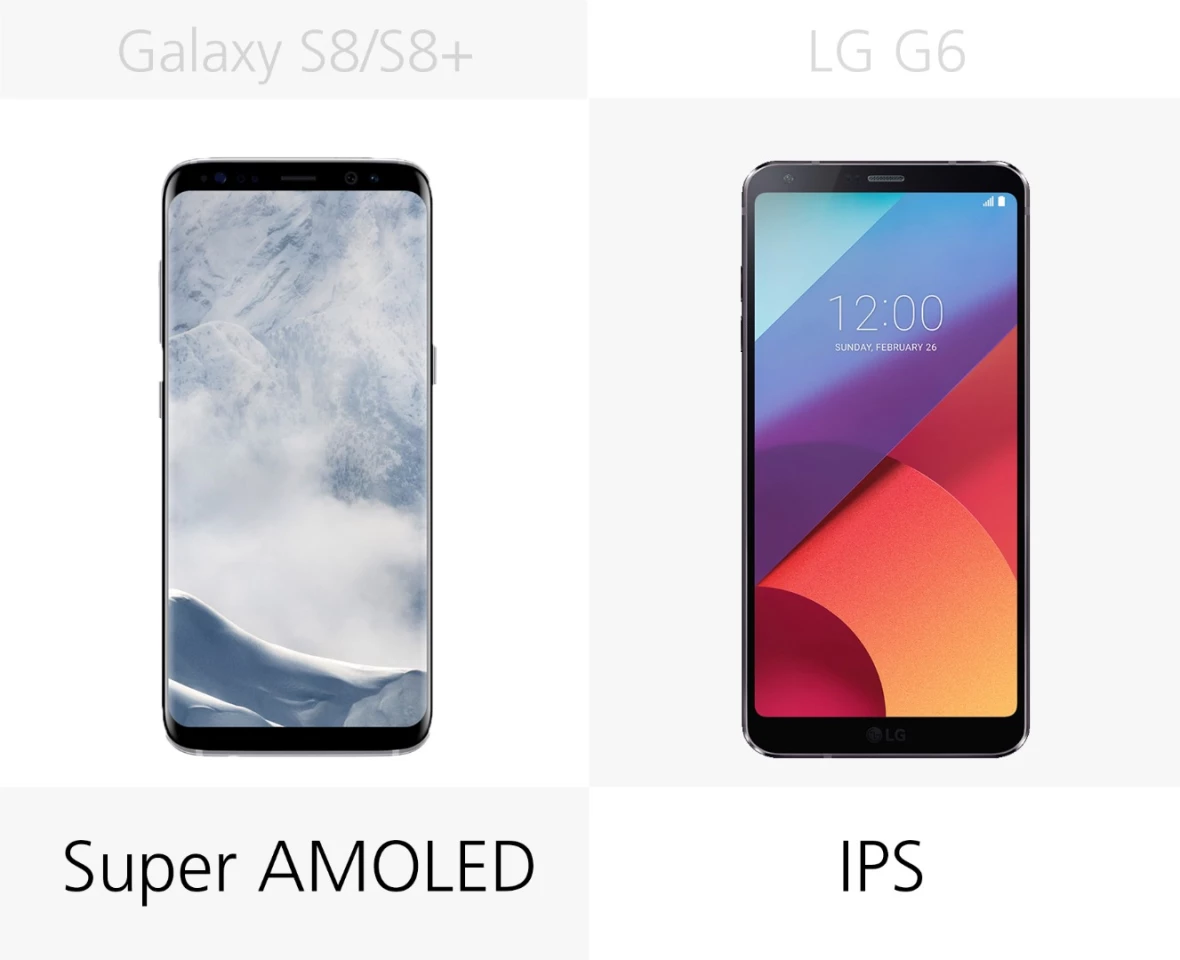
The two makers fall on opposite sides of the AMOLED vs. IPS fence. Samsung has been loyal to AMOLED technology for years, while LG sticks with IPS.
Display resolution
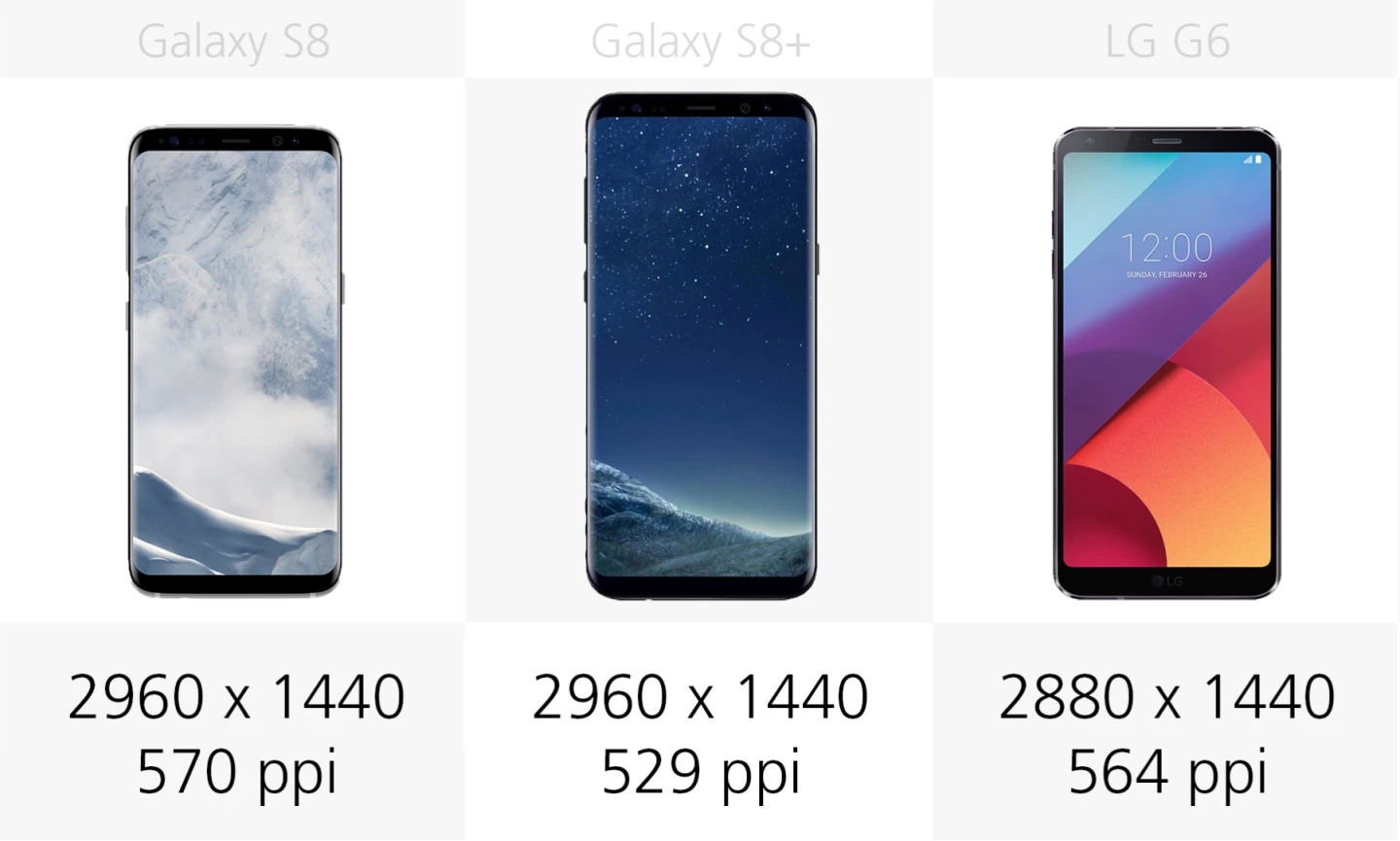
The S8 wins the pixel density battle, followed by the G6 and then the S8+. Still, all three of these phones are some of the highest-resolution flagships on the market.
HDR display
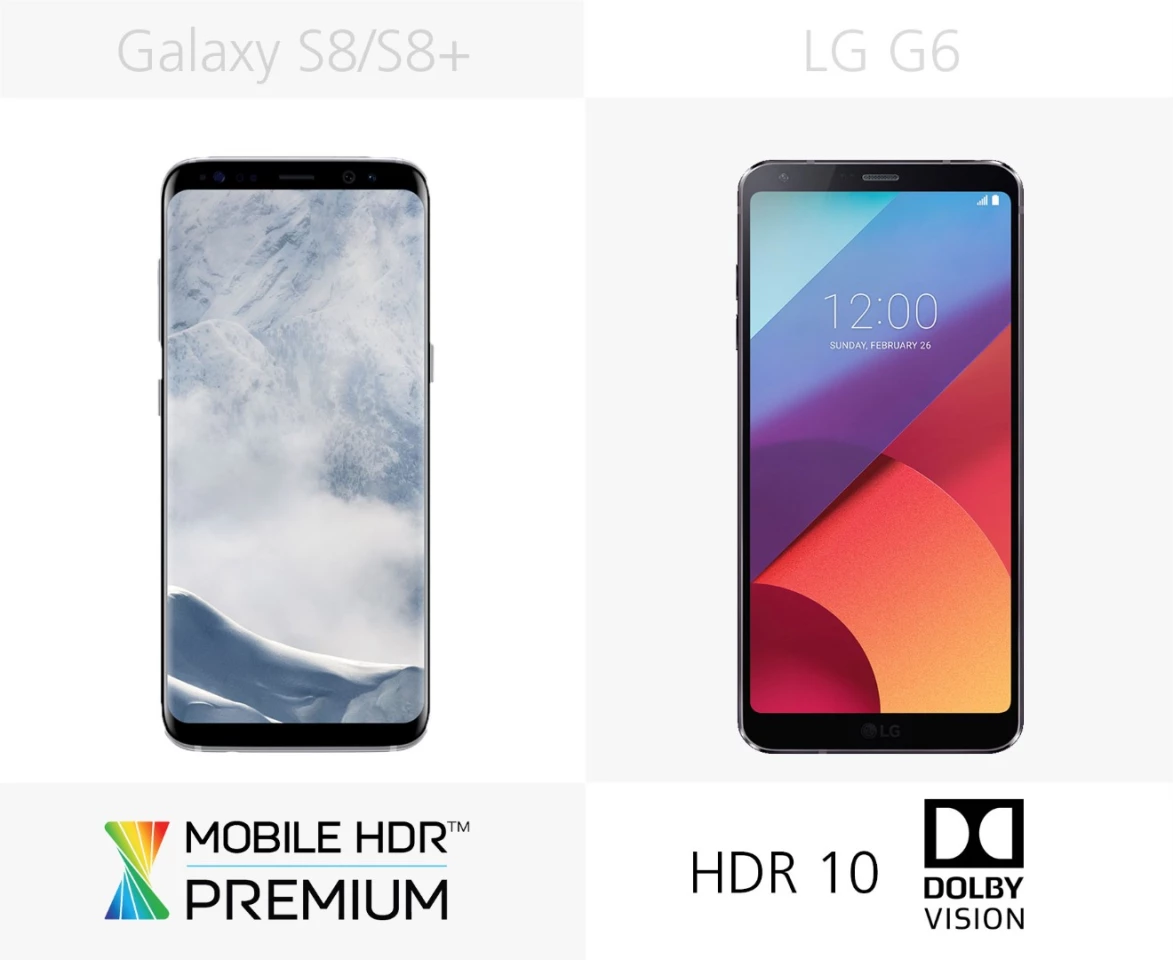
Both phones advertise HDR (high dynamic range) displays, though they don't use the same standards for the HDR designation. Either way, there should be some improvements in the contrast ratio and color gamut that may be noticeable when viewing HDR content.
Curved display
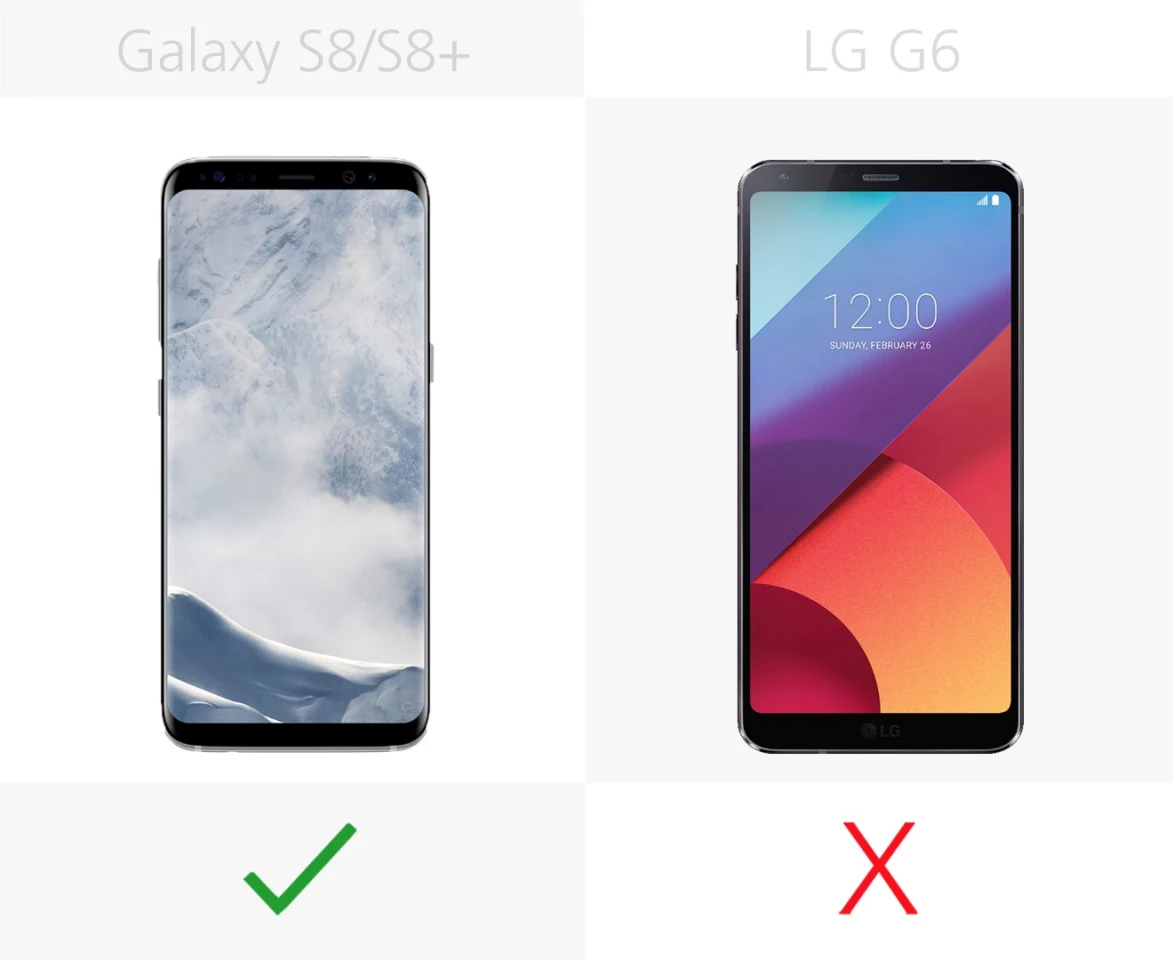
You may not be able to tell from photos alone, but the S8 flagships both have curved displays that wrap around the side edges of the device. The G6 is flat, like most phones.
Home button
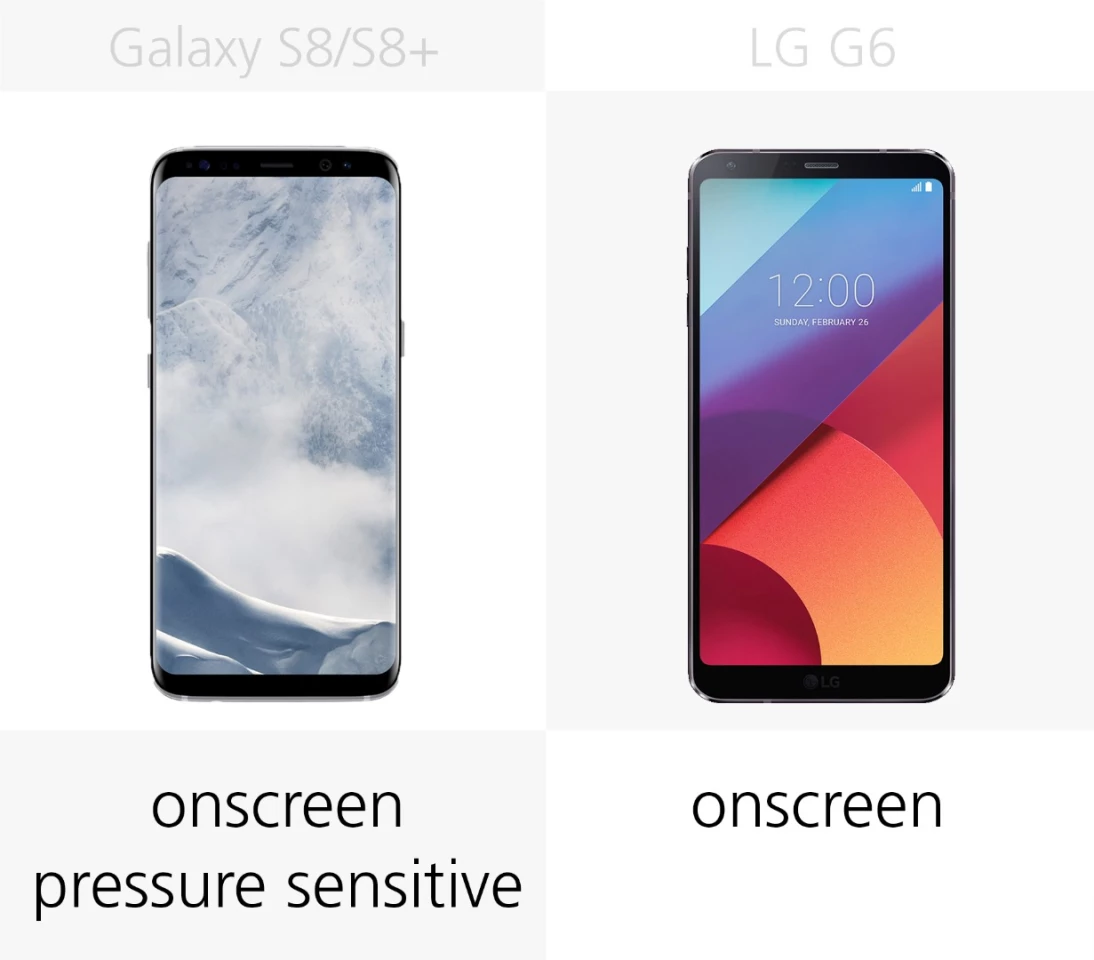
Both phones have onscreen home buttons (which makes sense, considering the size of their displays).
At the S8 launch event, Samsung mentioned that the home button has some pressure sensitivity technology included. During our brief hands-on time, though, we didn't see any practical advantage to this (since a tap worked just the same as a deep press). We'll investigate that more fully when we conduct a full-length review.
Fingerprint sensor
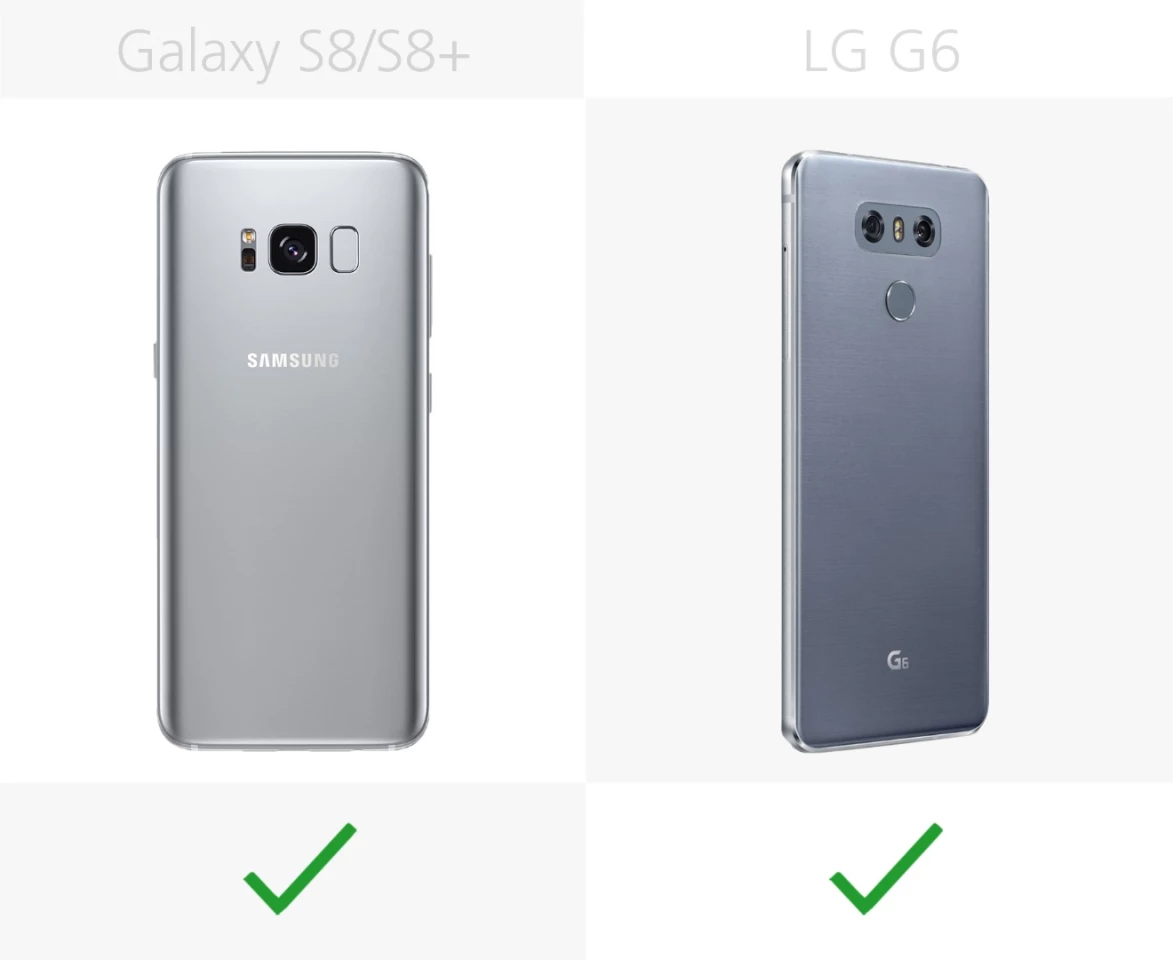
Both phones have a back-mounted fingerprint sensor. On the G6, it is centered, but on the S8 and S8+ it is on the right side of the camera lens.
Face recognition
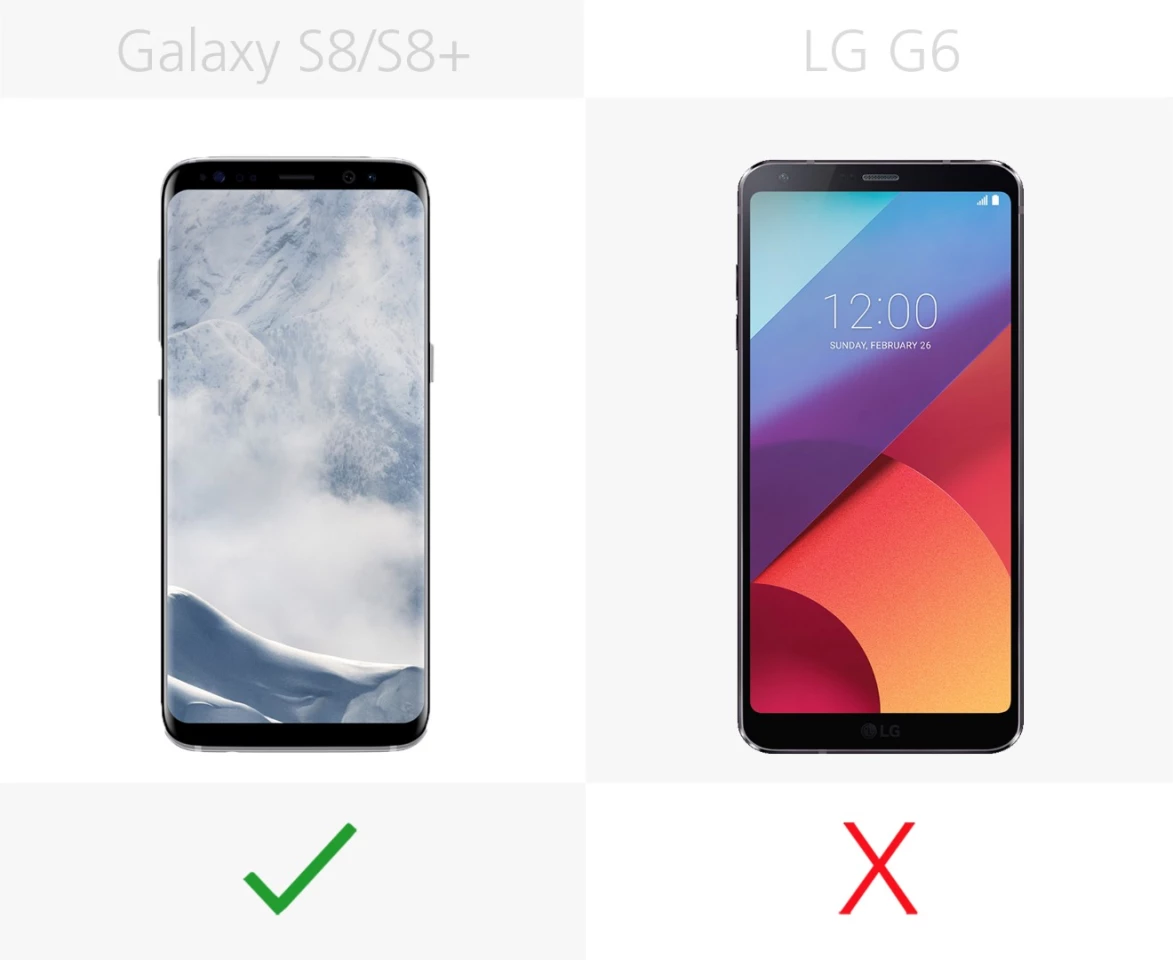
Samsung included face recognition technology which lets you unlock your phone quickly – but it may not be as secure as you think.
Iris scanning

The Samsung devices also contain a third biometric feature – the iris scanner. We're happy to report that this iteration of eye-scanning works a little faster than the slow experience we had with it on the Galaxy Note 7, though it's still not as friction.
Processor
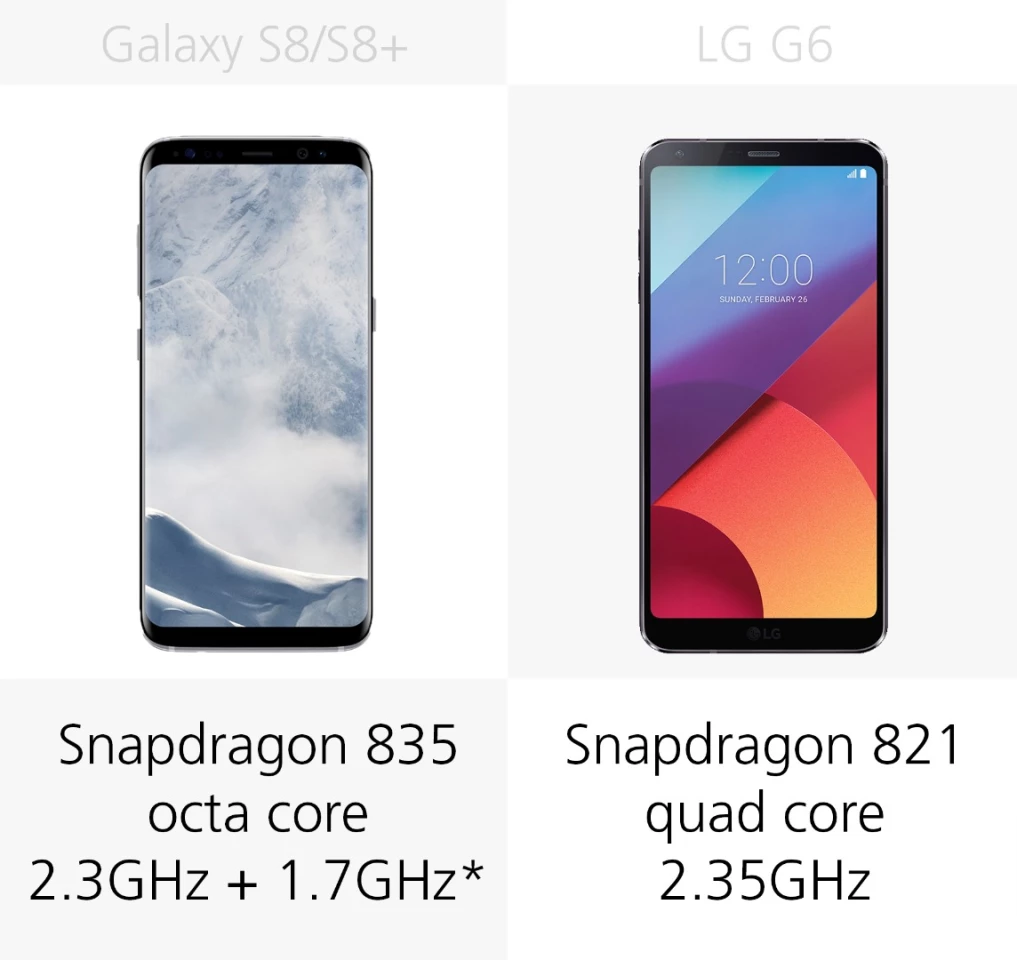
In the US and some other markets, the Samsung devices sport the latest Qualcomm processor, the Snapdragon 835. Elsewhere, they contain Samsung's own Exynos 8895 octa core 2.35GHZ + 1.9GHZ processor. The LG has a still-capable – but generation-old – Snapdragon 821 chip.
RAM
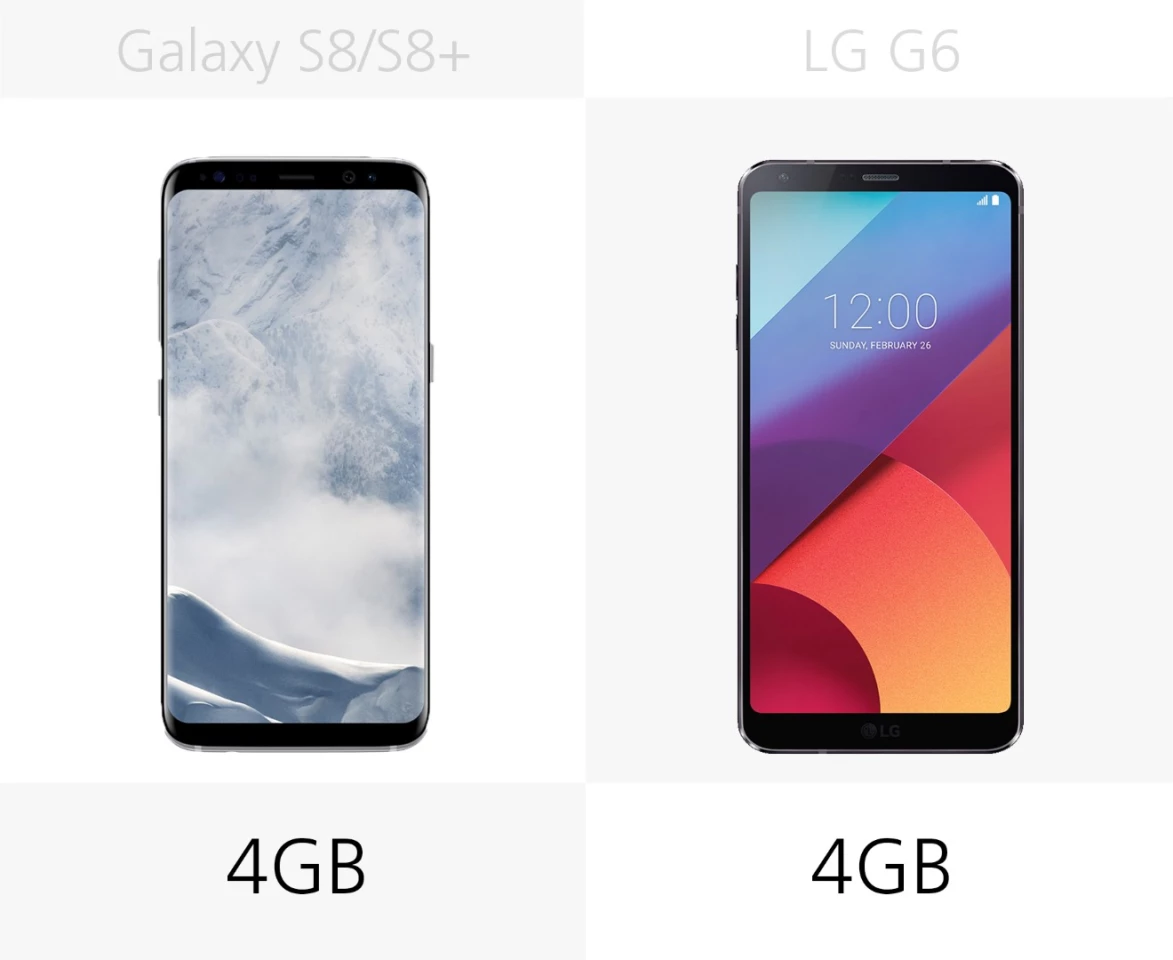
Both phones contain 4 GB of RAM.
Storage
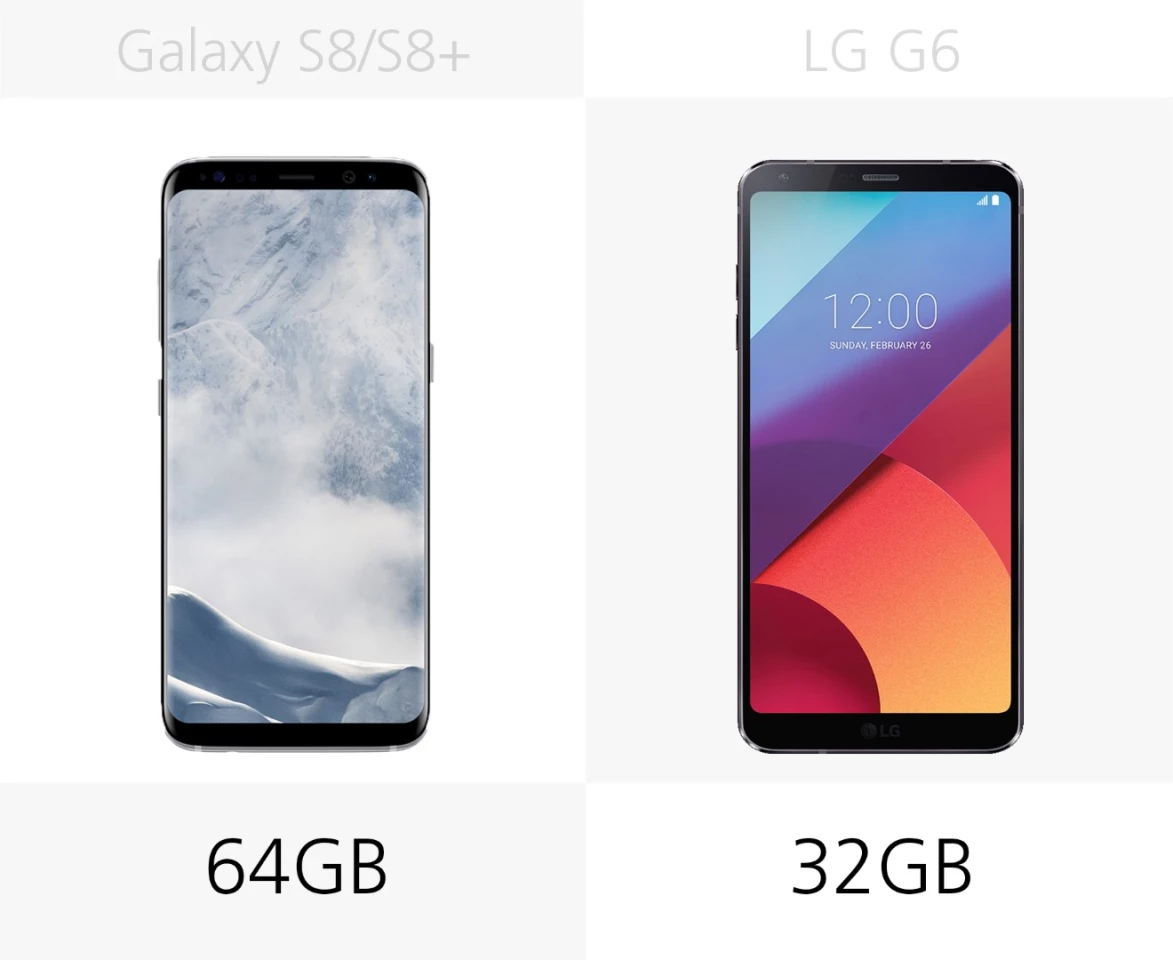
The S8 and S8+ have double the internal storage of the LG G6.
MicroSD
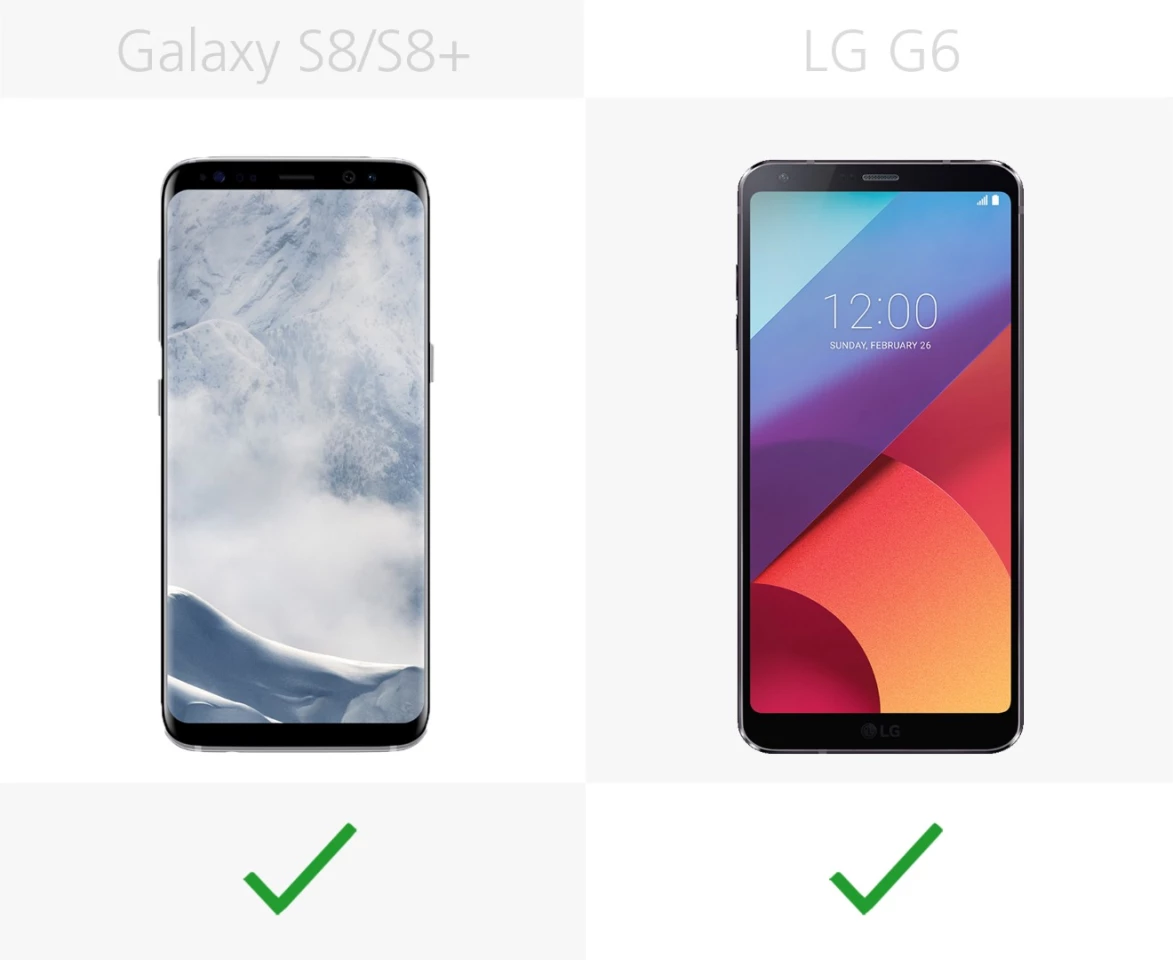
But if the built-in storage amount isn't enough for you, don't worry: Both phones support expandable storage via microSD.
Hi-Fi audio
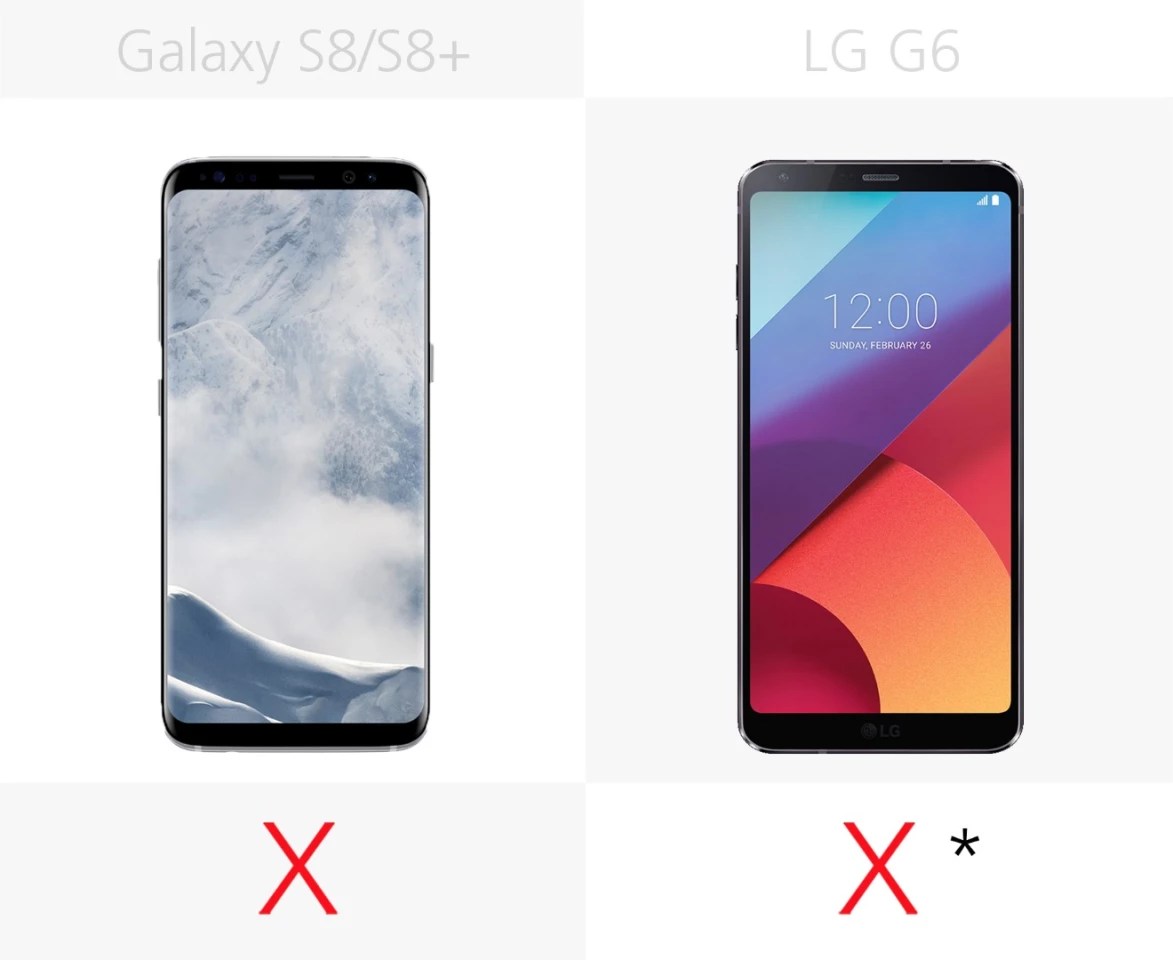
The LG G6 has Quad DAC for hi-fi audio – but only in Korea and some other Asian markets.
Headphone jack
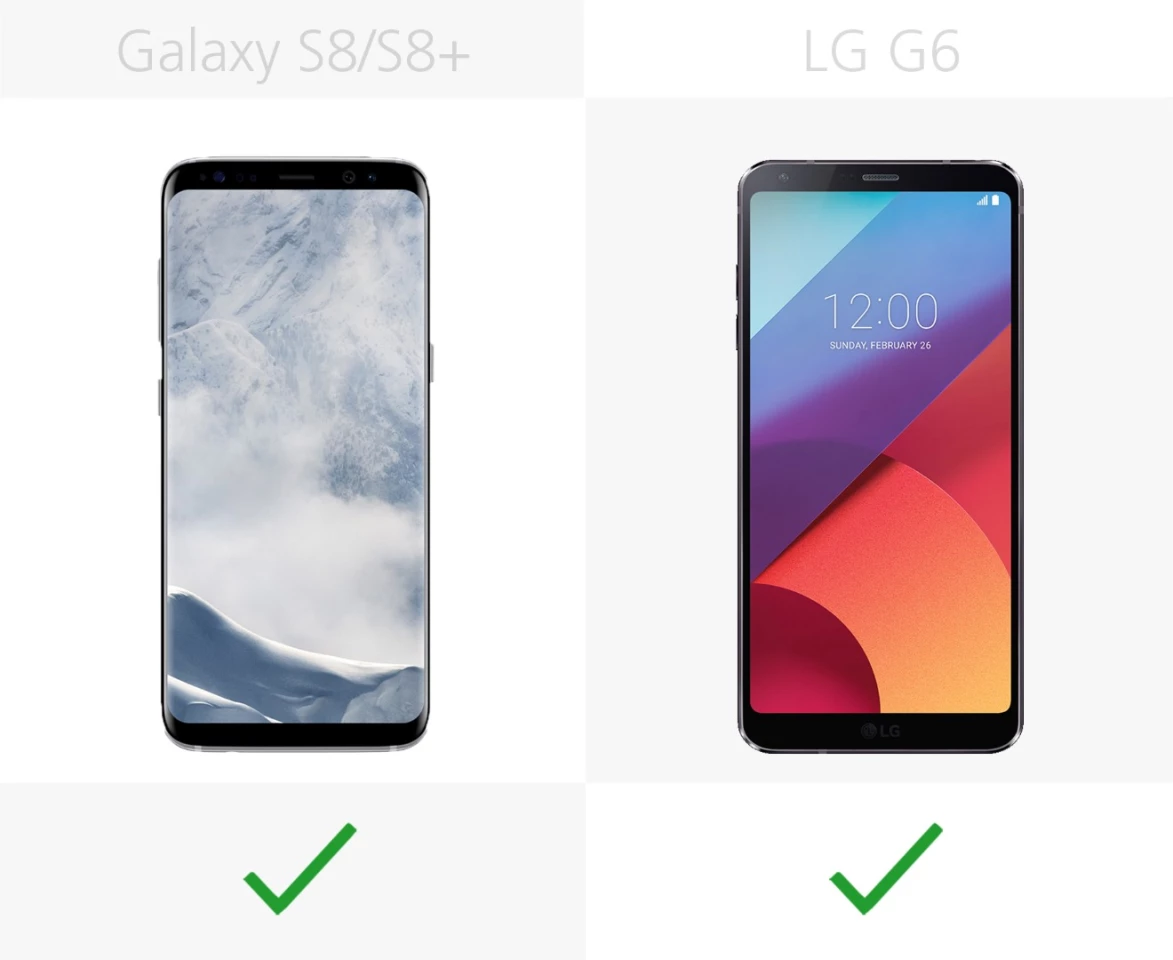
It seems that most manufacturers are hesitant to follow in the footsteps of the iPhone 7. Both of these flagships maintain the traditional headphone jack.
Battery
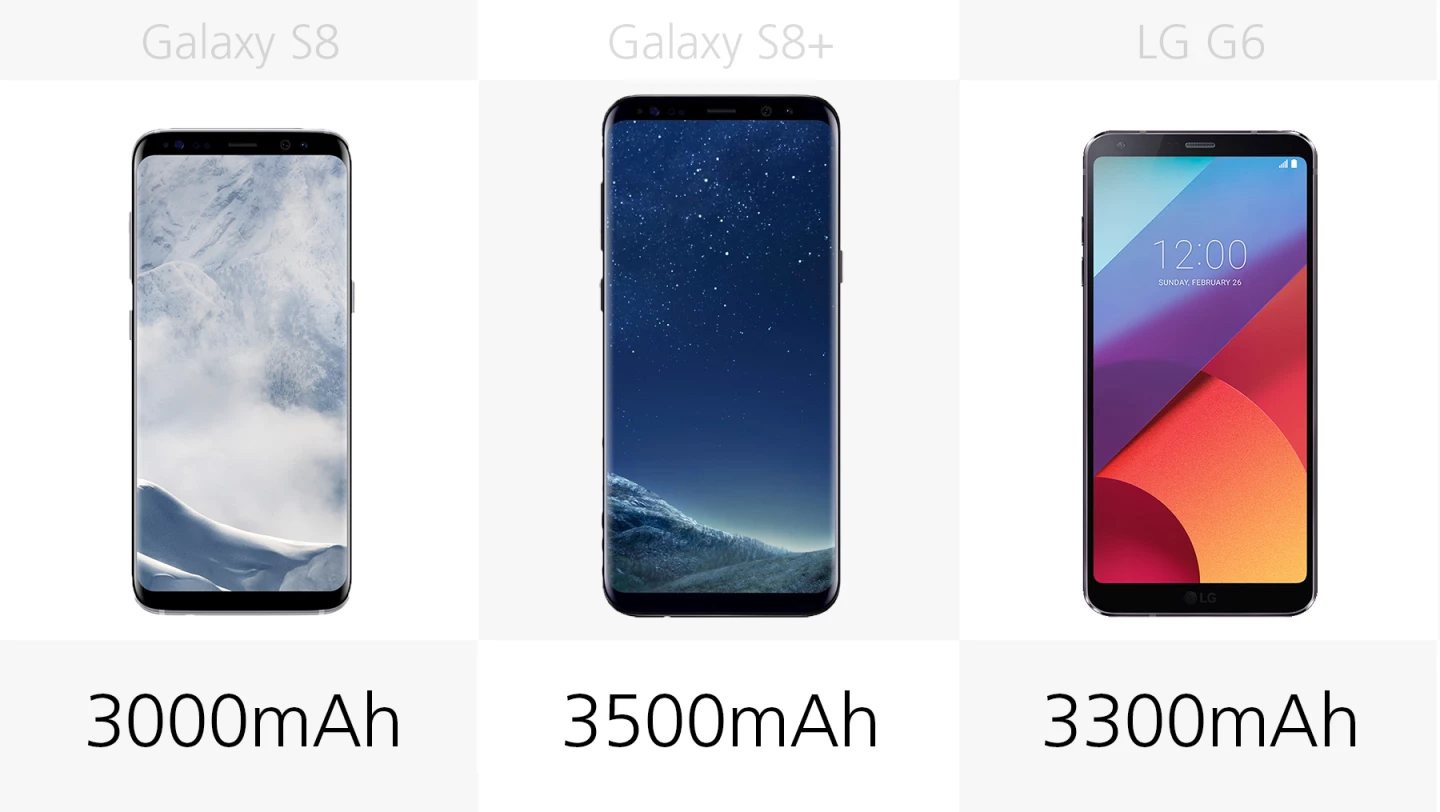
All three phones have very similar battery sizes, ranging from 3,000-3,500 mAh, but there are many factors that go into overall battery life. Once we get our hands on them for a longer review period, we'll conduct our standard battery test.
Quick charging

Both phones have fast charging capabilities.
Wireless charging
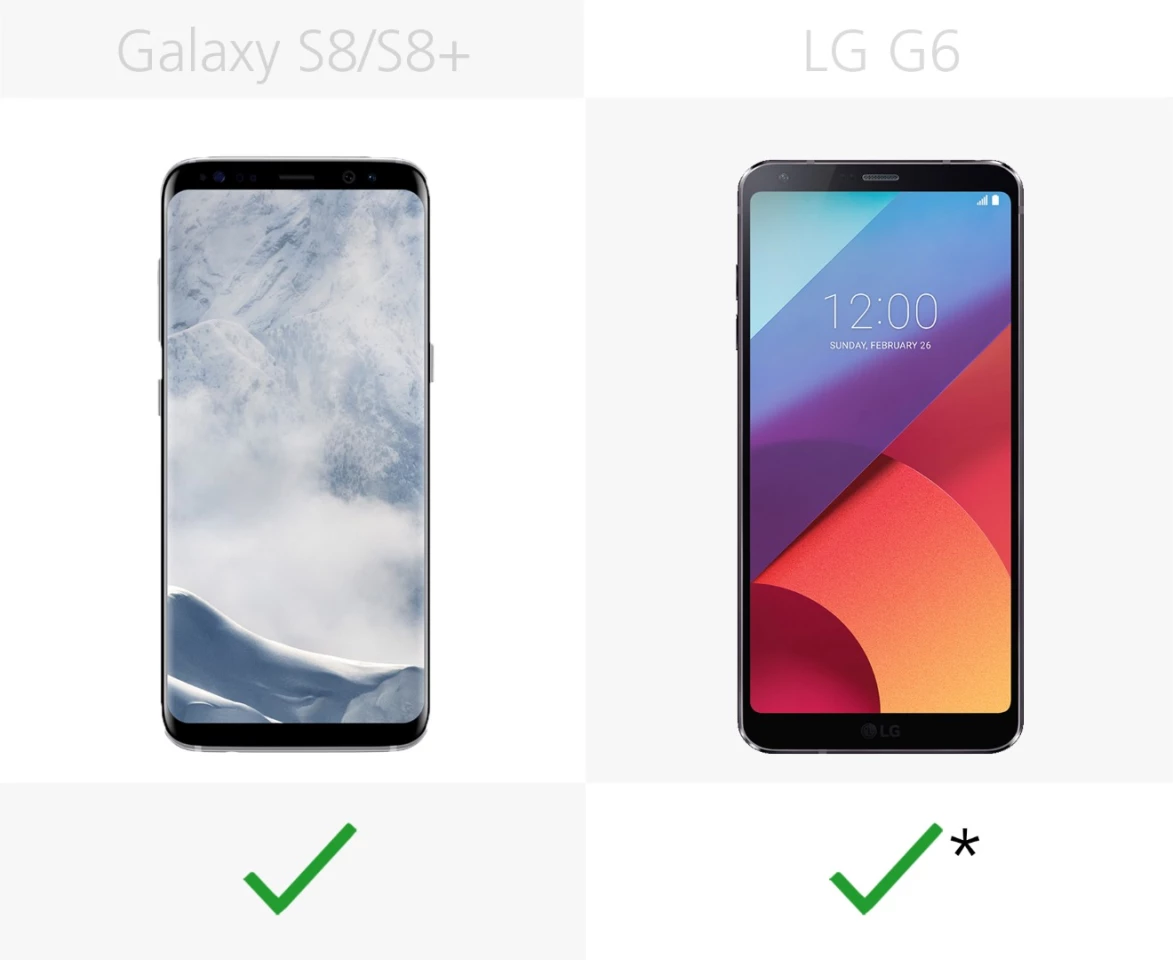
Both phones support wireless charging – in the US. International versions of the G6 are not equipped for it. You'll need a wireless charging pad, sold separately.
With the right Samsung-made pad, the S8 series also supports fast wireless charging, something the G6 can't do.
Camera megapixels
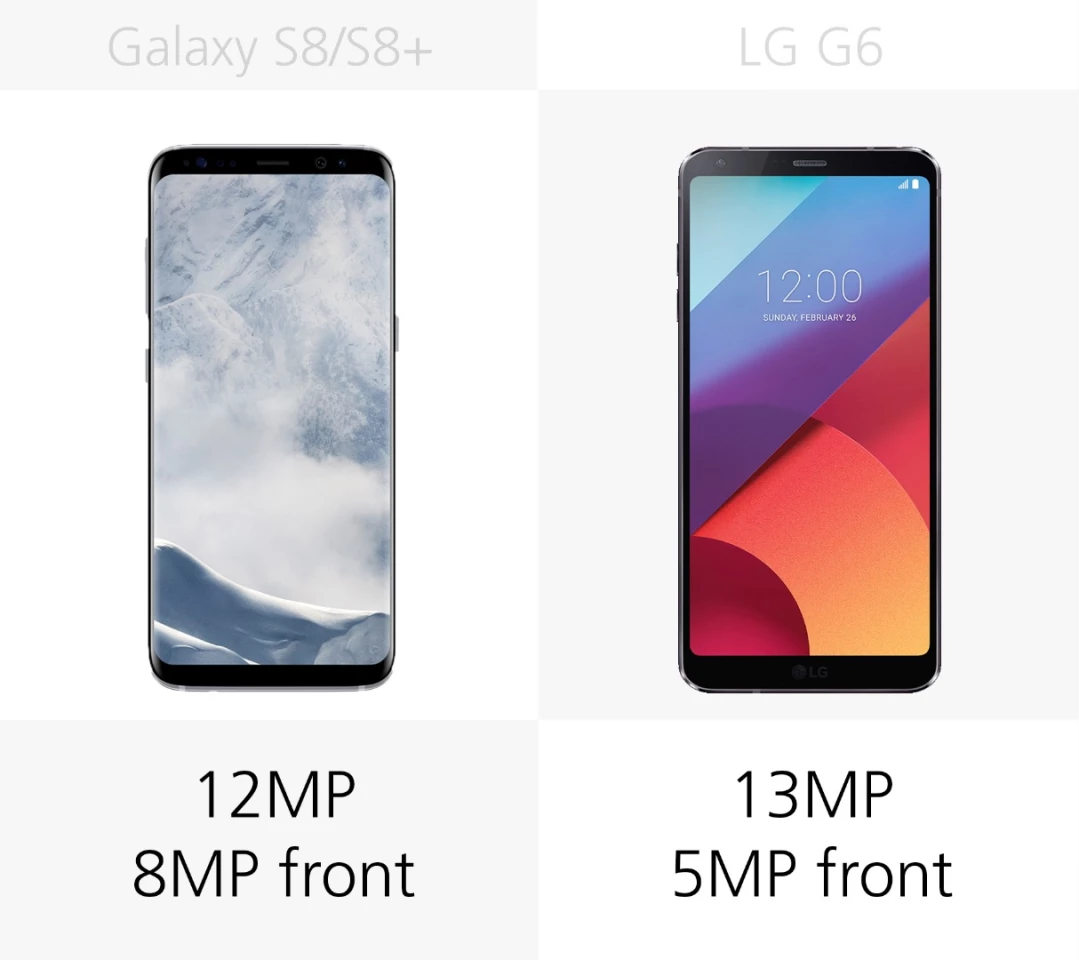
The G6 sneaks in an additional megapixel in the rear-facing camera, but the selfie camera on the S8 series should be considerably sharper.
Camera aperture (rear)
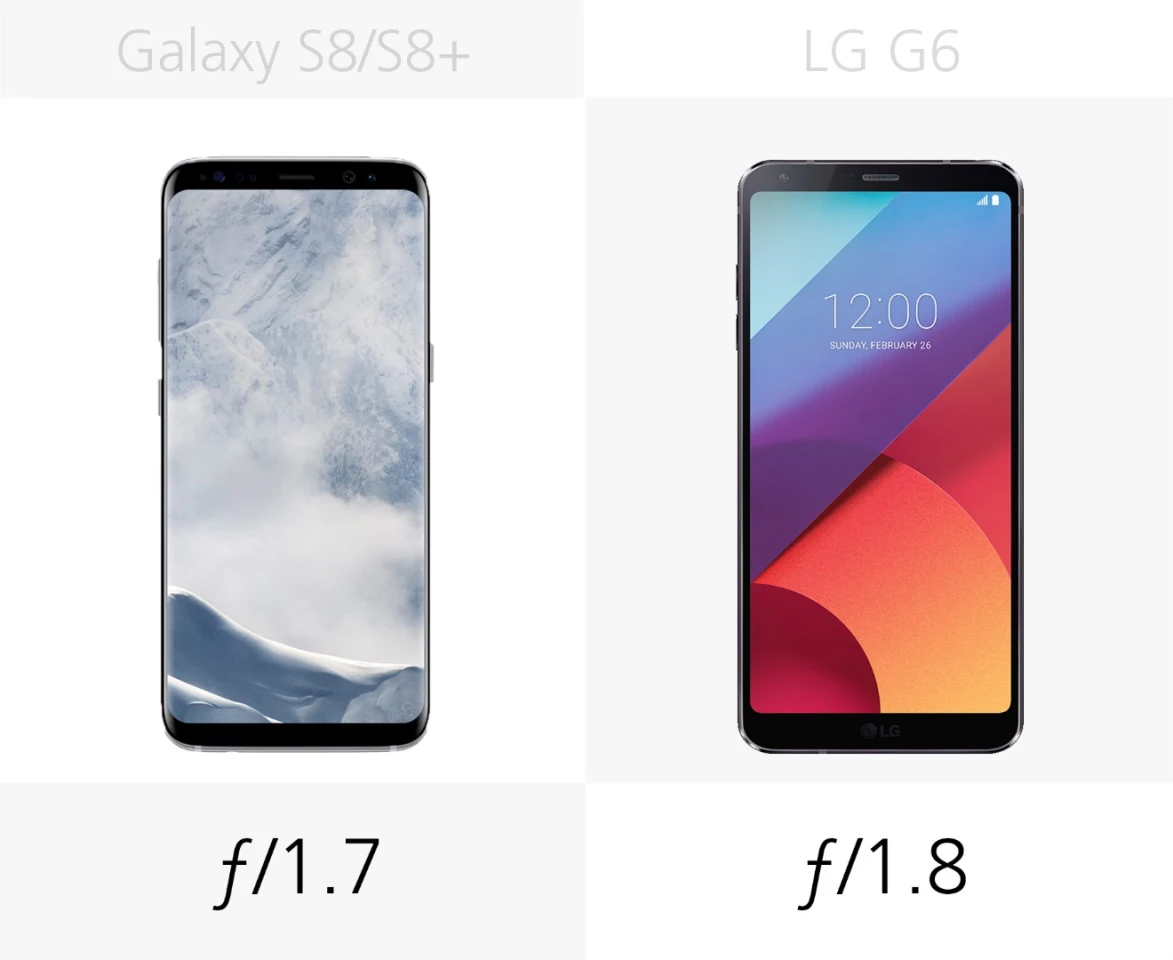
Larger apertures on smartphone cameras can mean perks like improved shooting in low-light conditions. Here, the S8 series has the advantage: The lower the f-stop, the larger the aperture.
Dual-lens camera
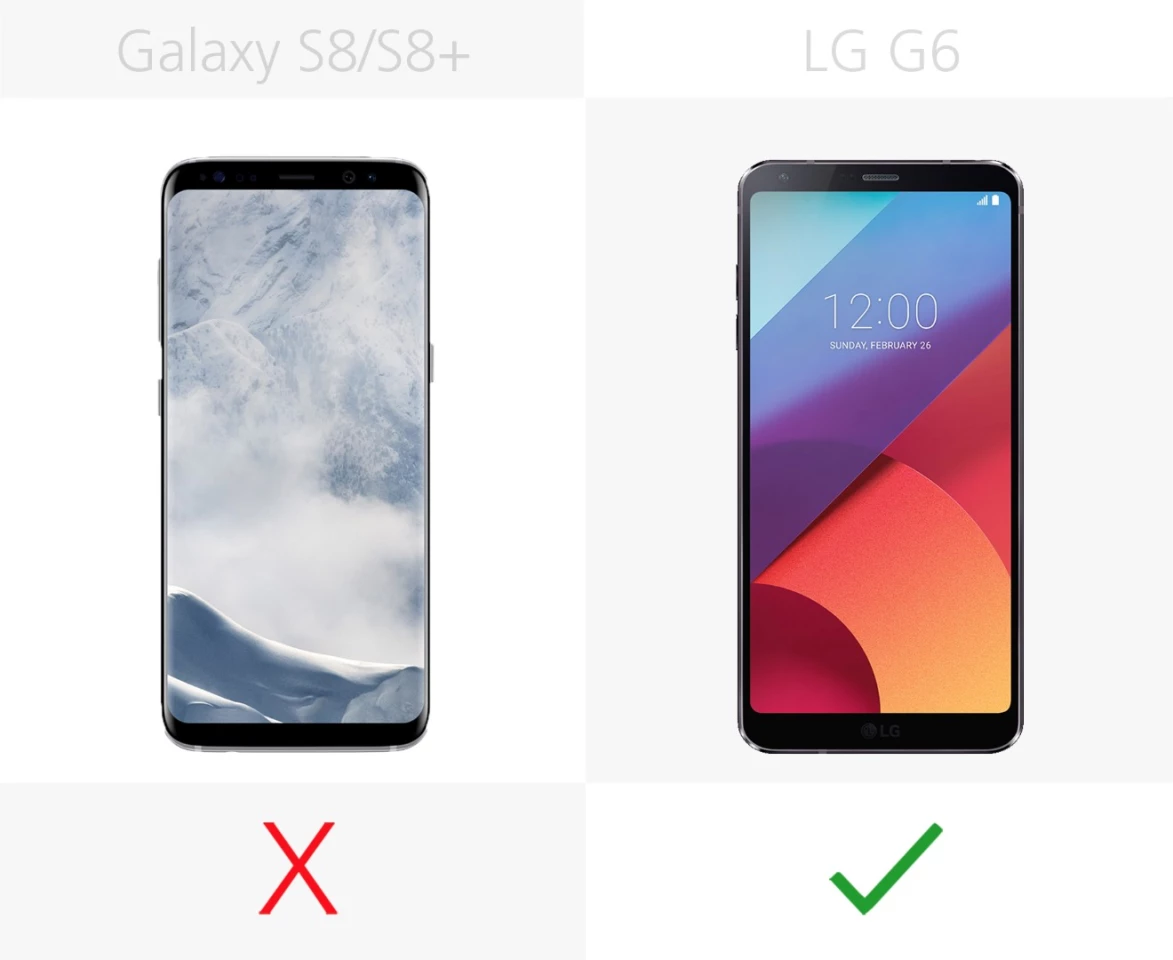
But in a point for LG, the G6 has a dual-lens rear camera. In this instance, the camera combines a standard lens with a wide-angle lens, so you can toggle back and forth to fit more or less into the frame.
OIS

Both rear cameras have optical image stabilization (OIS) which helps prevent shaky-hand-induced blur.
Voice assistant
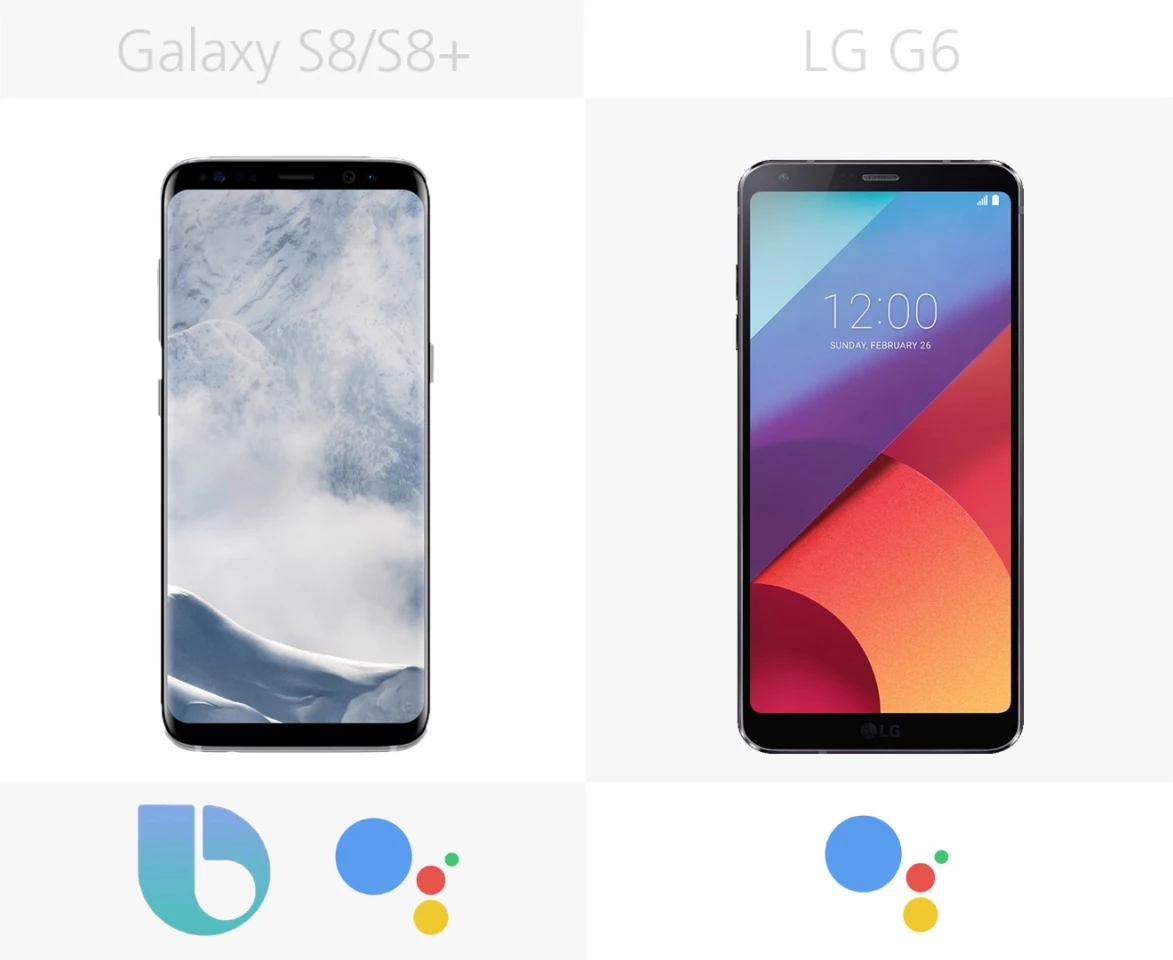
We're not sure if voice assistants are a major selling point for the average consumer, but these virtual assistants are certainly marketed heavily. The LG G6 uses Google Assistant (which is now built into all recent Android software) while the S8 series is the first to sport Samsung's Bixby, which has its own hardware button.
Since the S8 and S8+ run on Android Nougat, they have Google Assistant capabilities as well, which strikes us as potentially confusing for users.
VR-ready
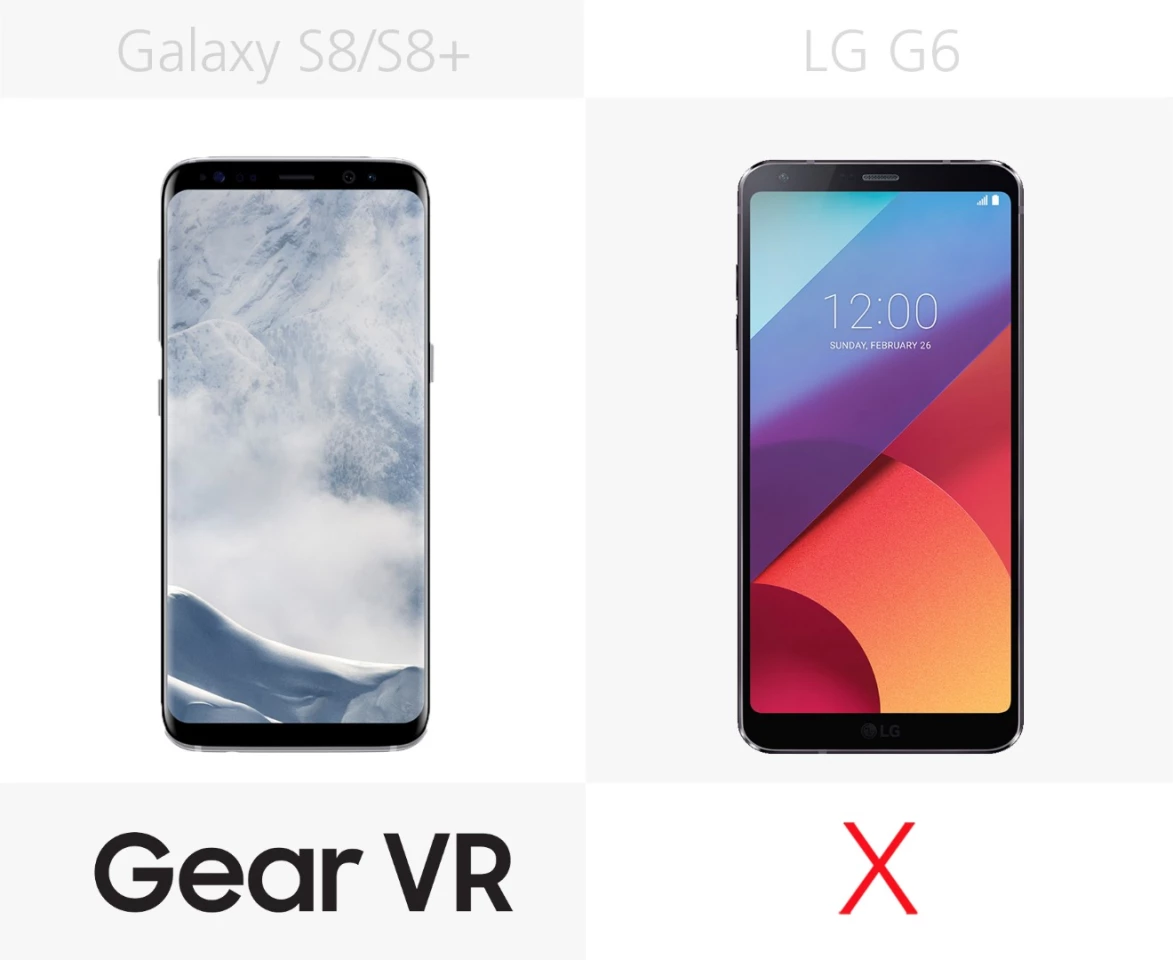
The S8 series works with the Samsung Gear VR mobile virtual reality headset. The G6 (with its IPS display) does not support any significant mobile VR.
Desktop dock

Alongside the S8 series, Samsung unveiled the DeX dock, which can harness the power of your S8 phone to run a desktop-like experience (you add the monitor, keyboard and mouse).
Mobile payments
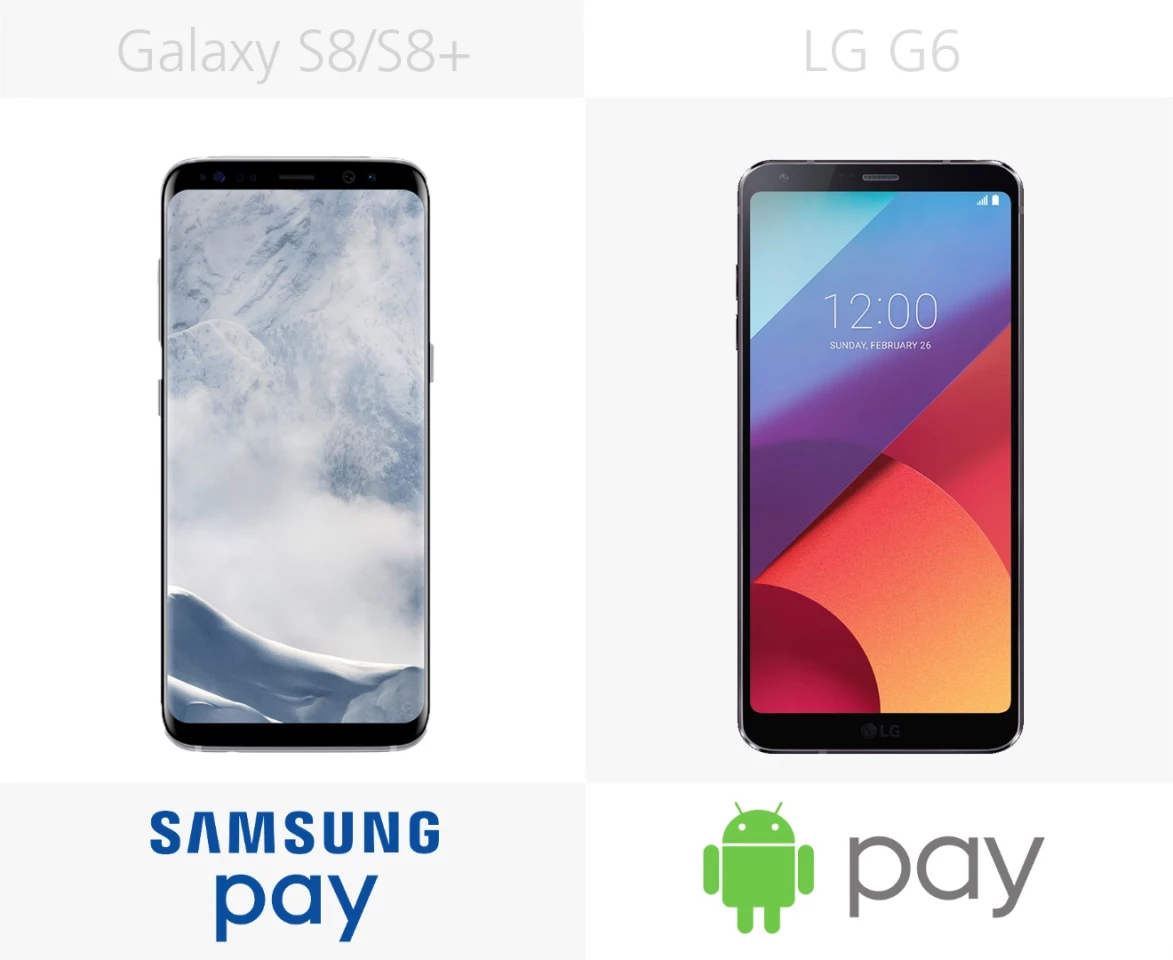
The S8 phones work with Samsung Pay, which has a potentially useful advantage over Android Pay: Samsung Pay can be used with NFC terminals, or it can also imitate magnetic strip technology. That means it can be accepted anywhere that accepts magnetic strip cards.
Release
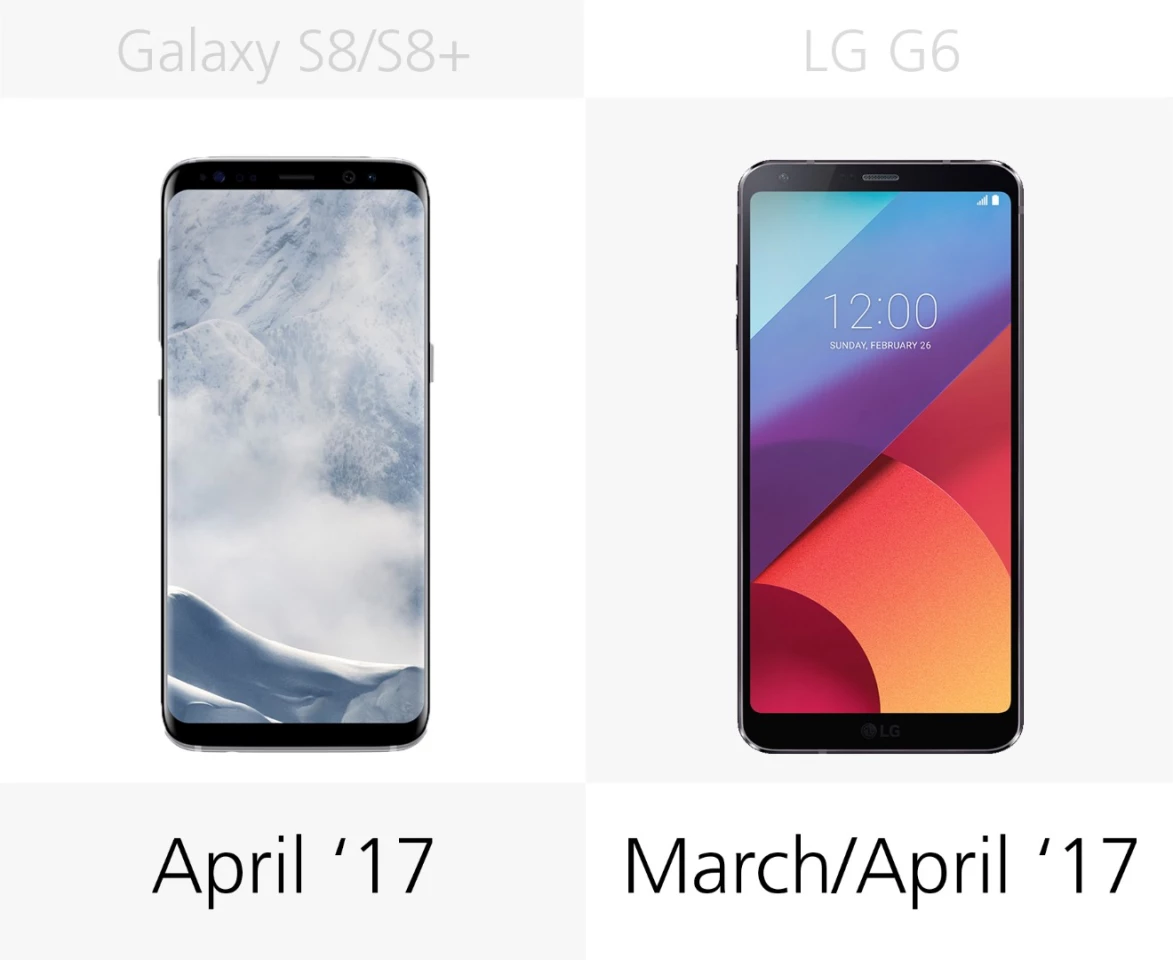
The LG G6 was revealed earlier this year at the Mobile World Congress, while Samsung unveiled the S8 and S8+ at a standalone launch event a few weeks ago. The LG hit Asian markets in March, but hits shelves worldwide this month. The official release date for the S8 series is April 21.
Software
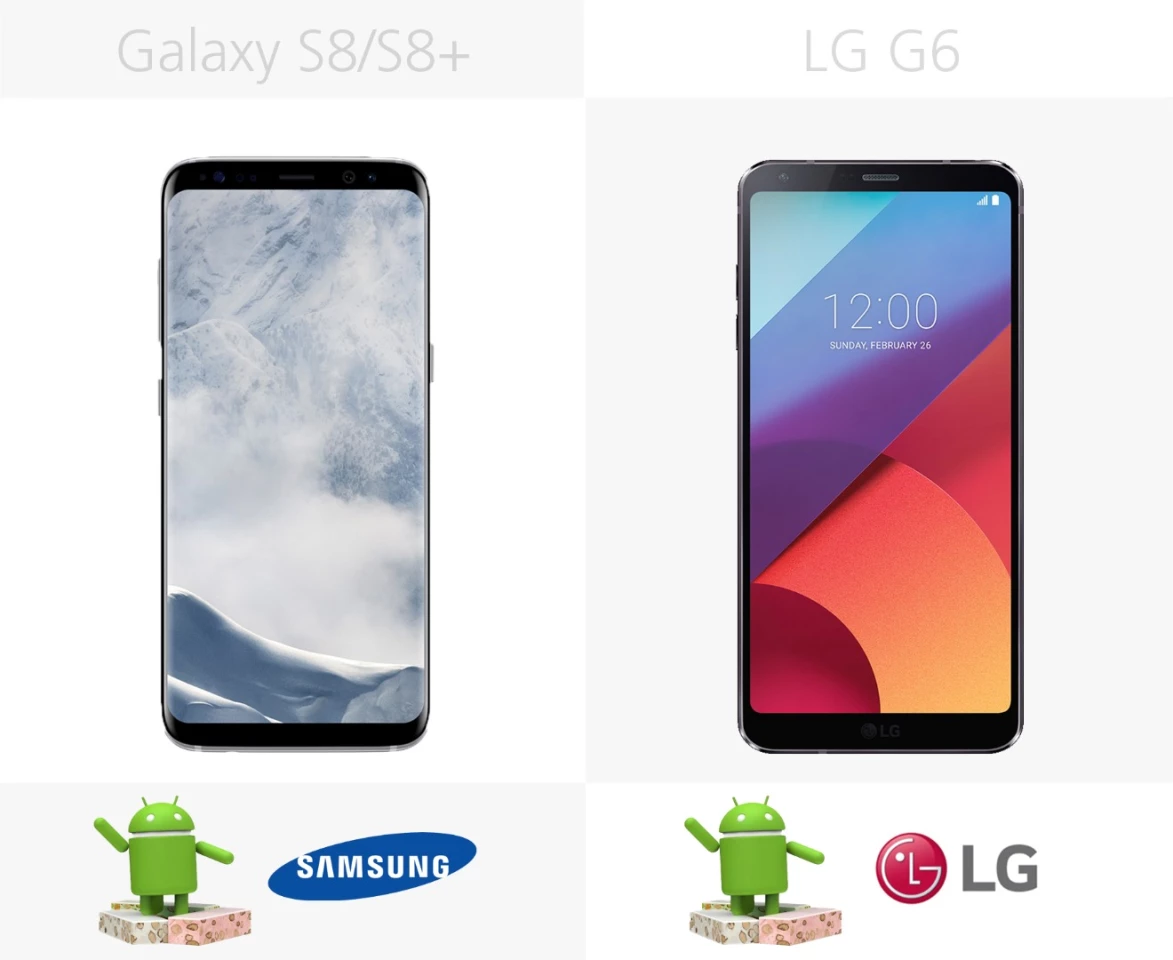
Both of these run Android Nougat, but don't expect a stock experience. Both Samsung and LG skin the software with their own UI.
Starting price (full retail)
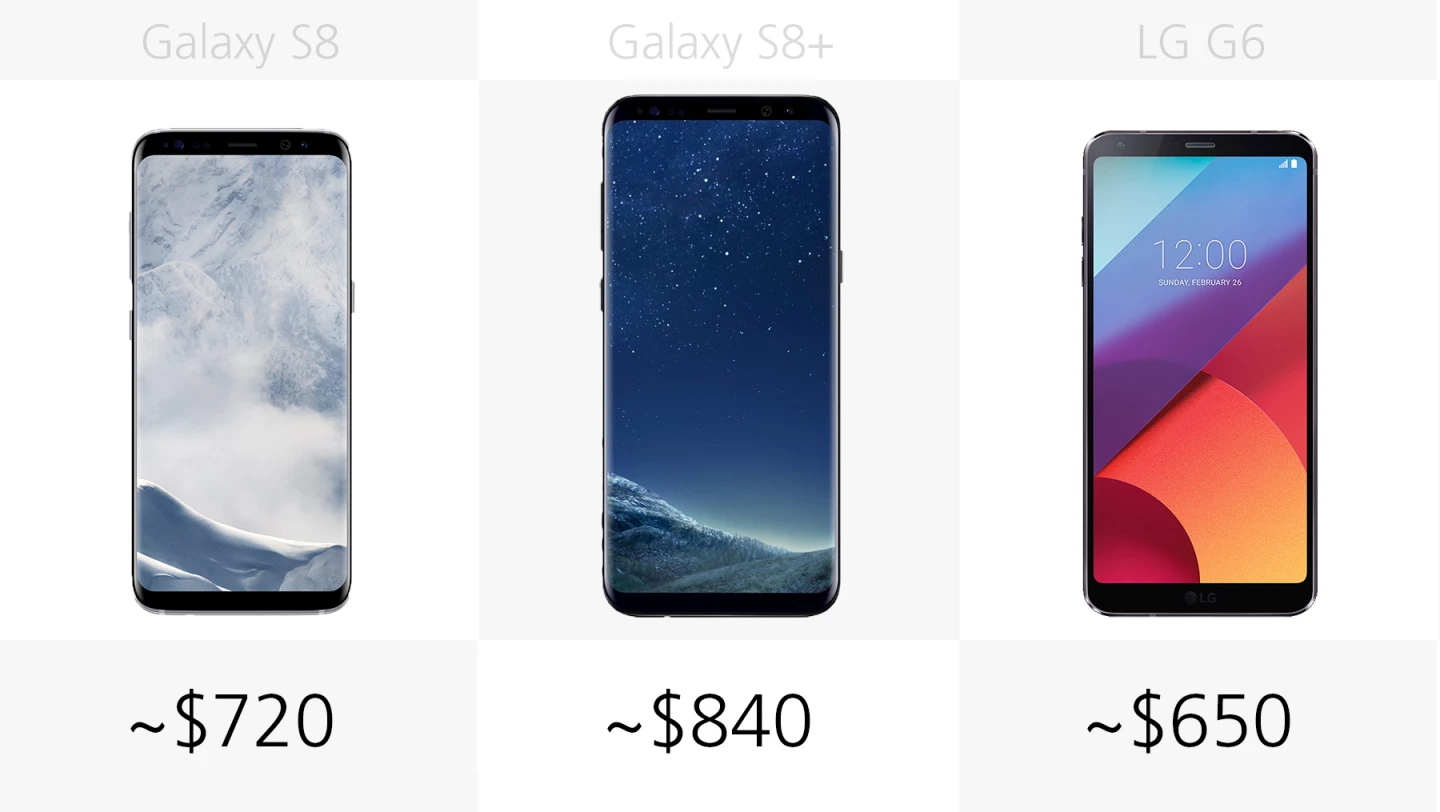
These are all top-shelf phones with price tags to match. Full prices to vary according to carrier and payment plan, but expect to pay the most for the S8+, followed by the S8 and G6.
Stay tuned – we will have full-length reviews for both phones posted in due course. In the meantime, check out our hands-on impressions of the Galaxy S8 series or the LG G6.





































